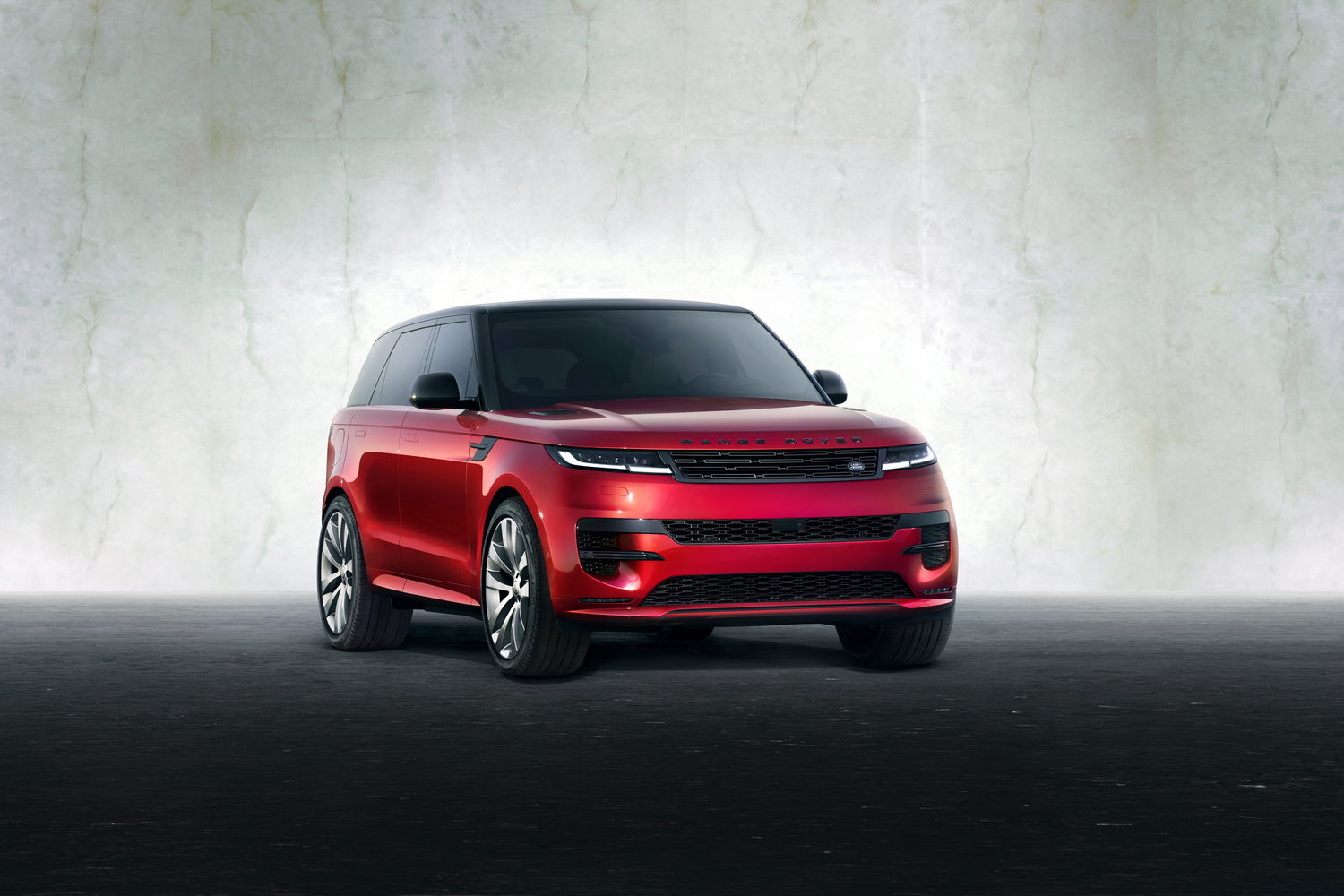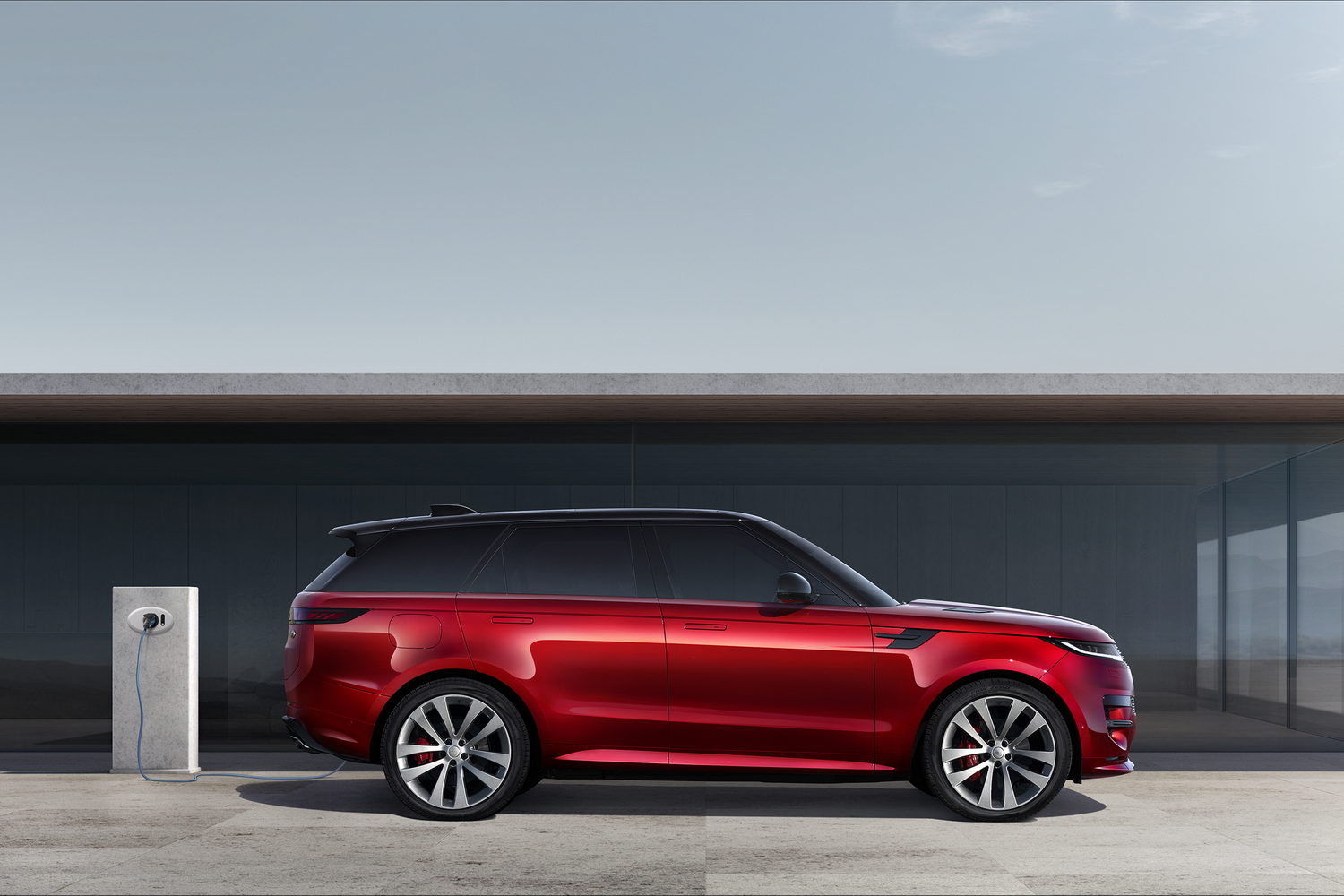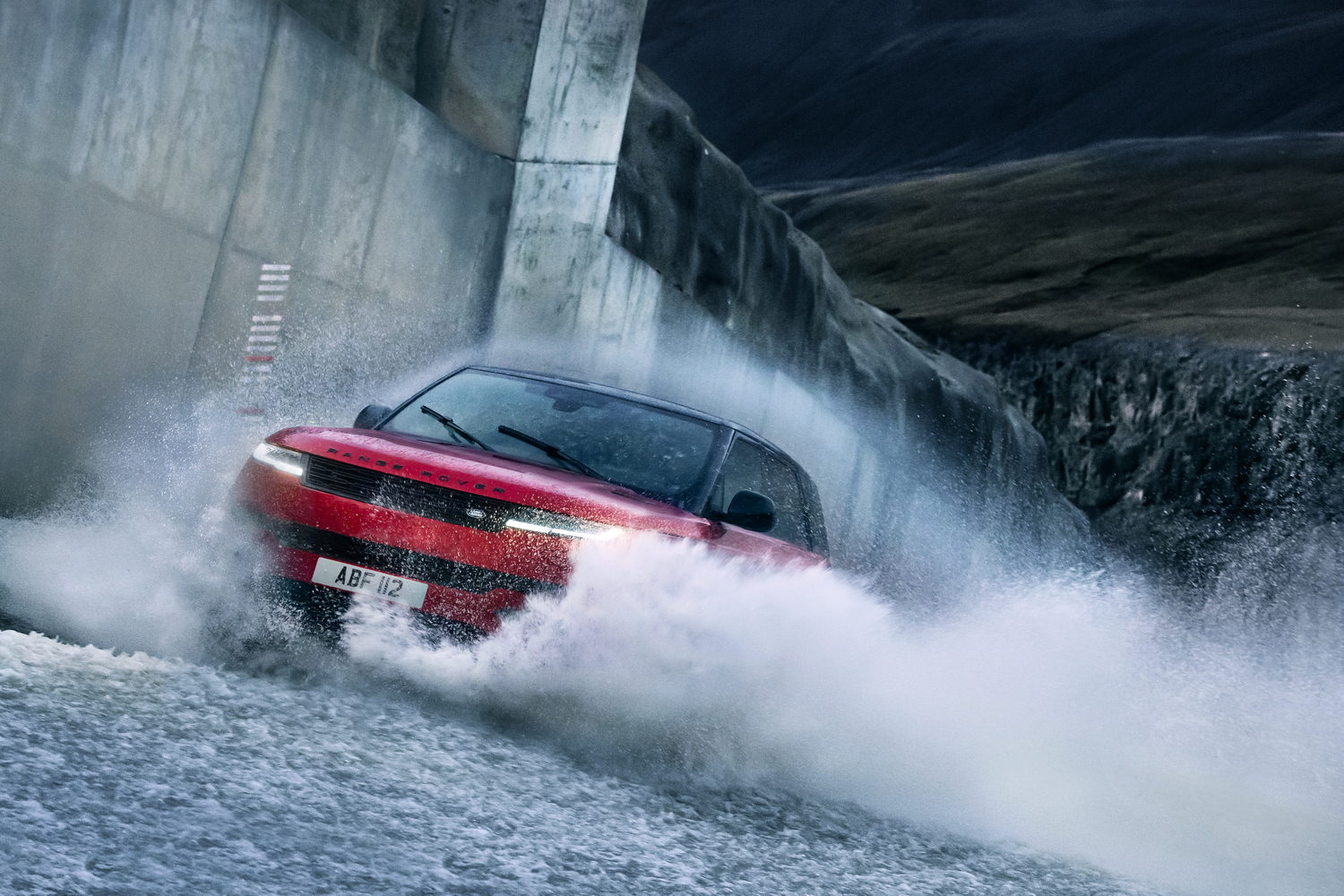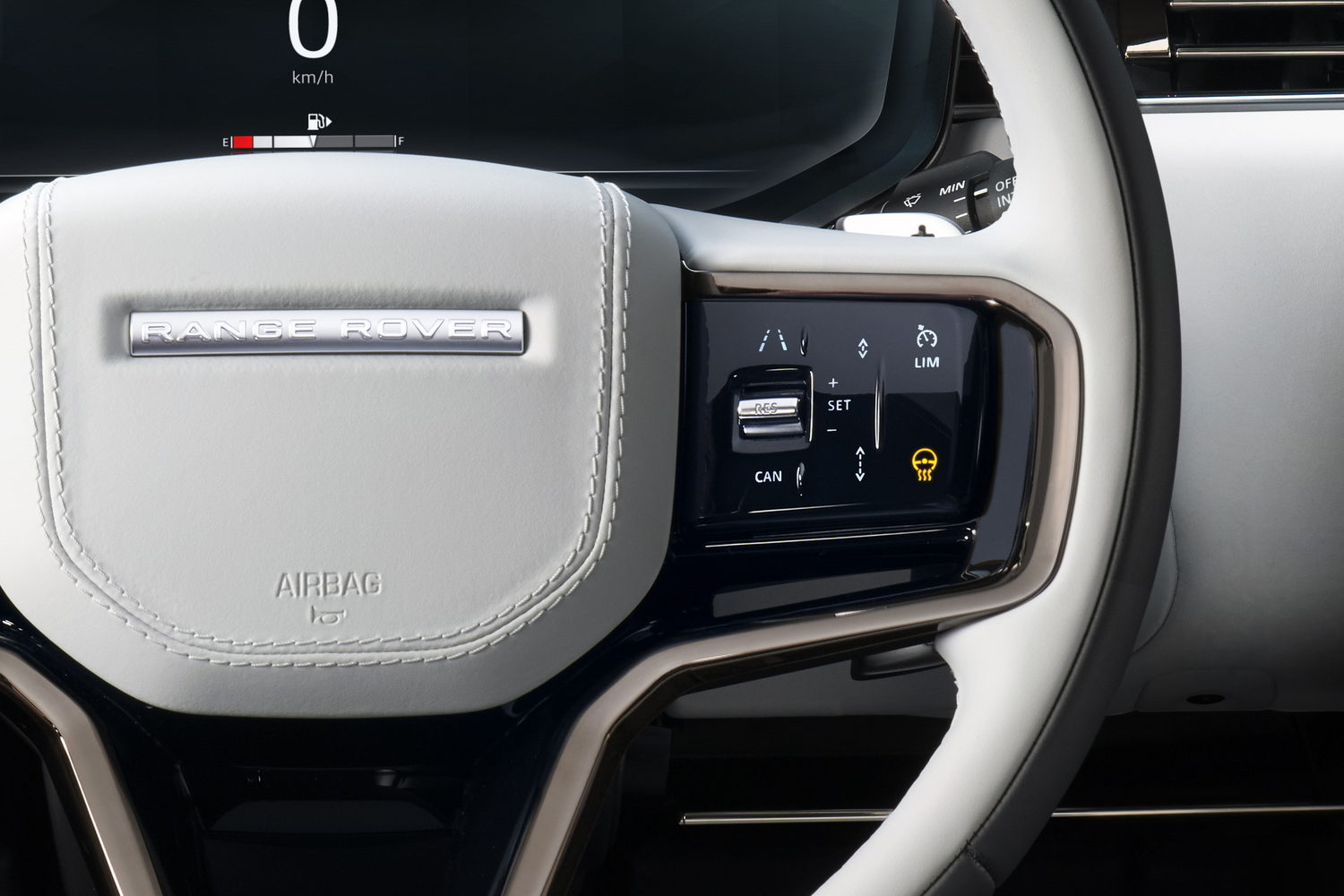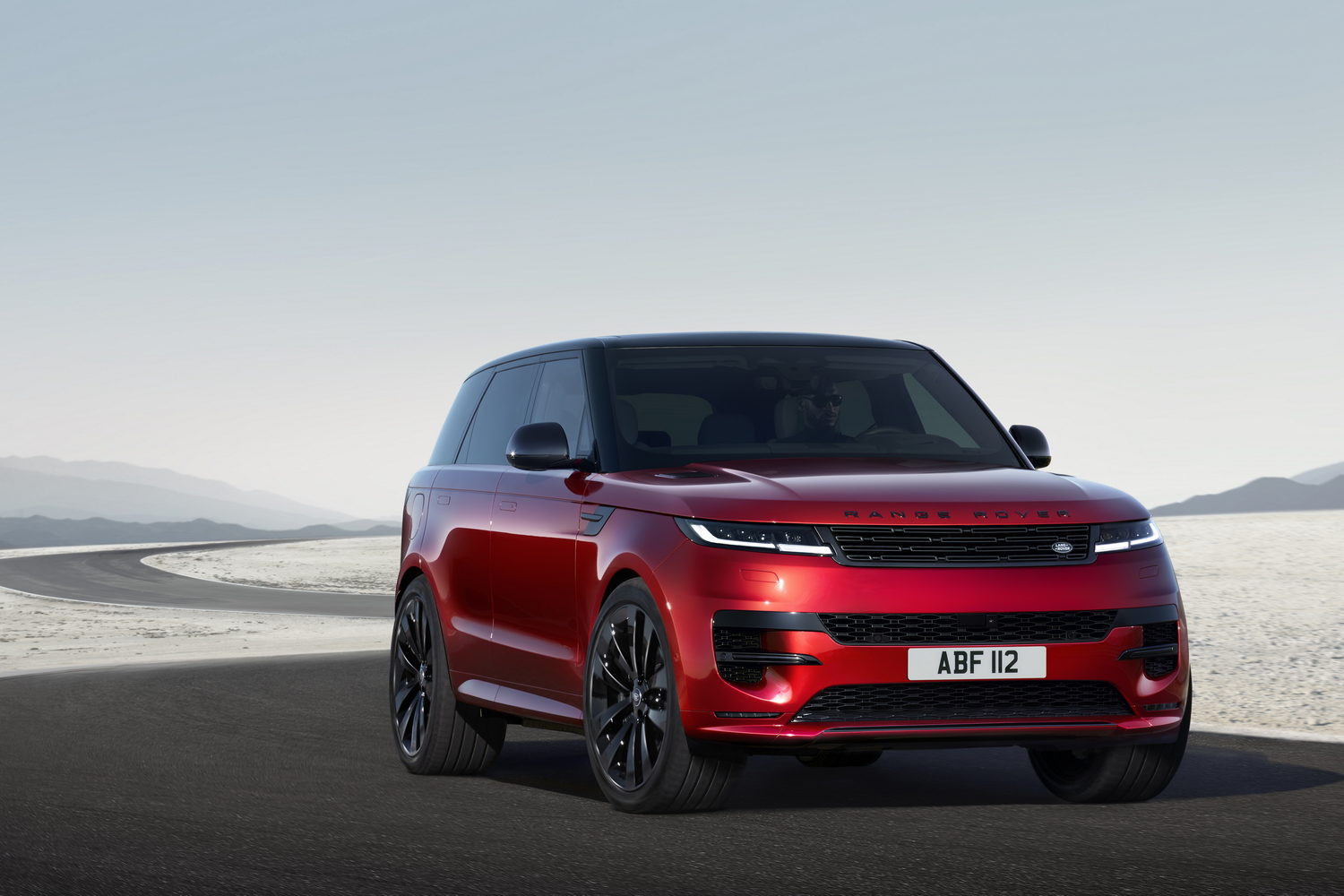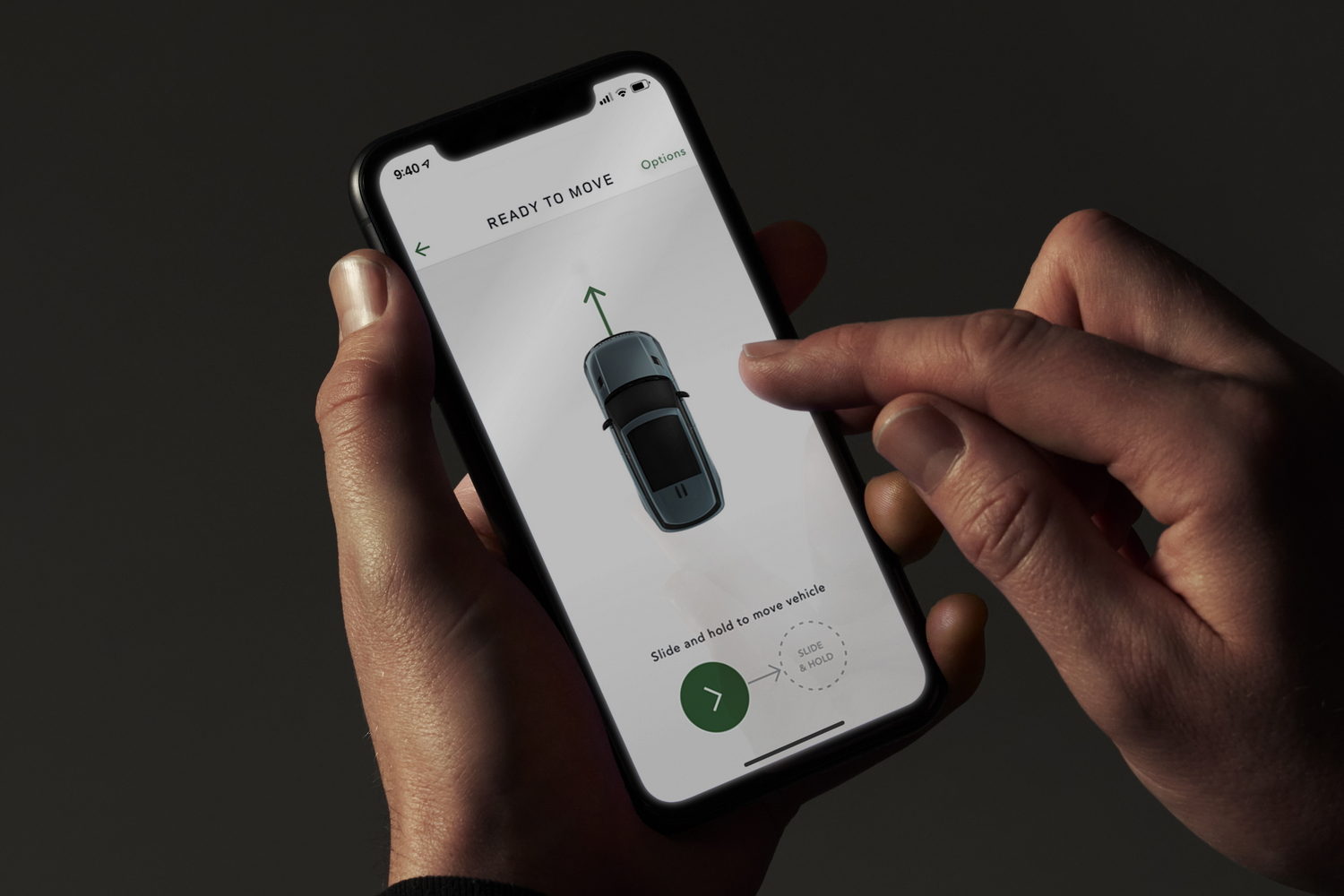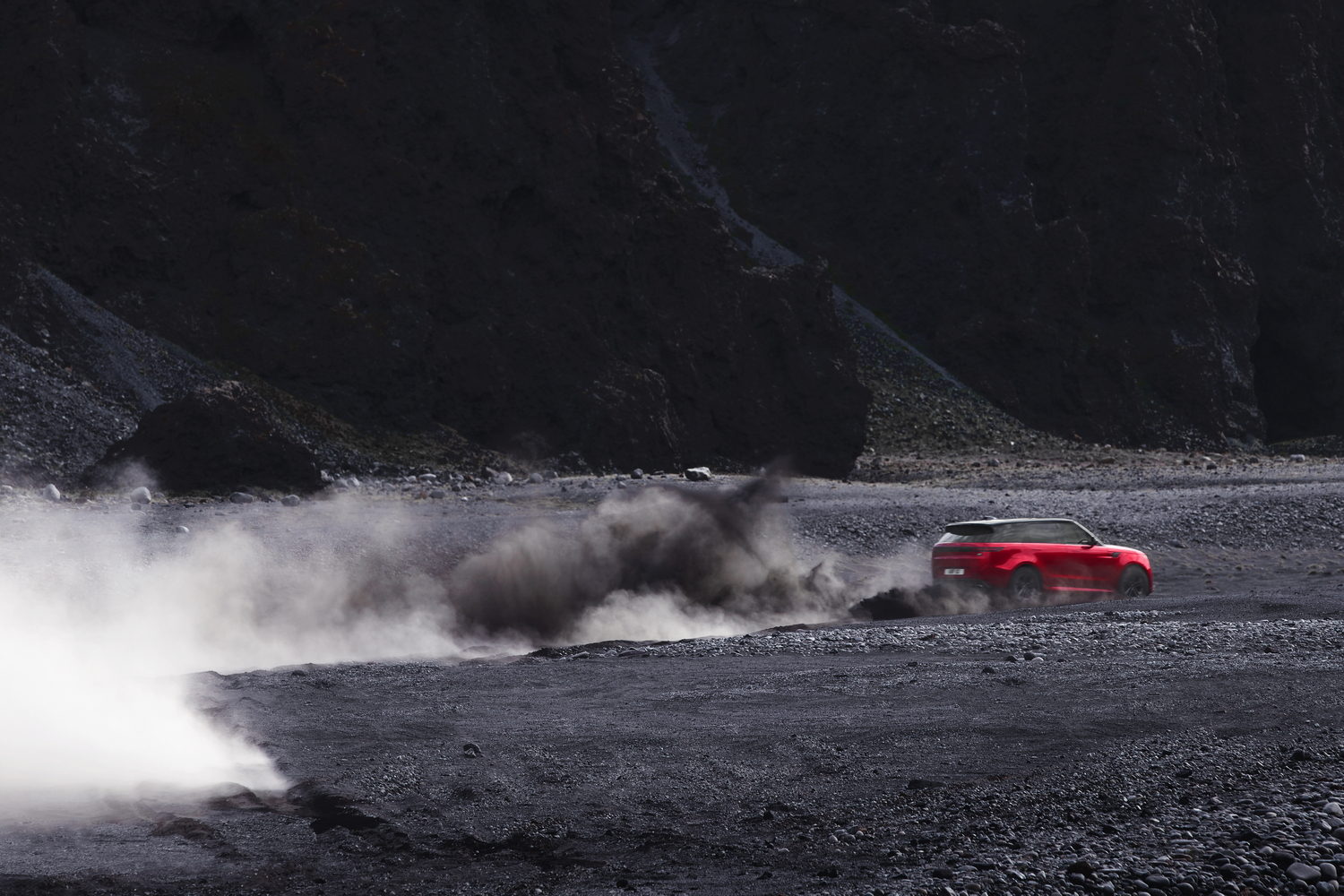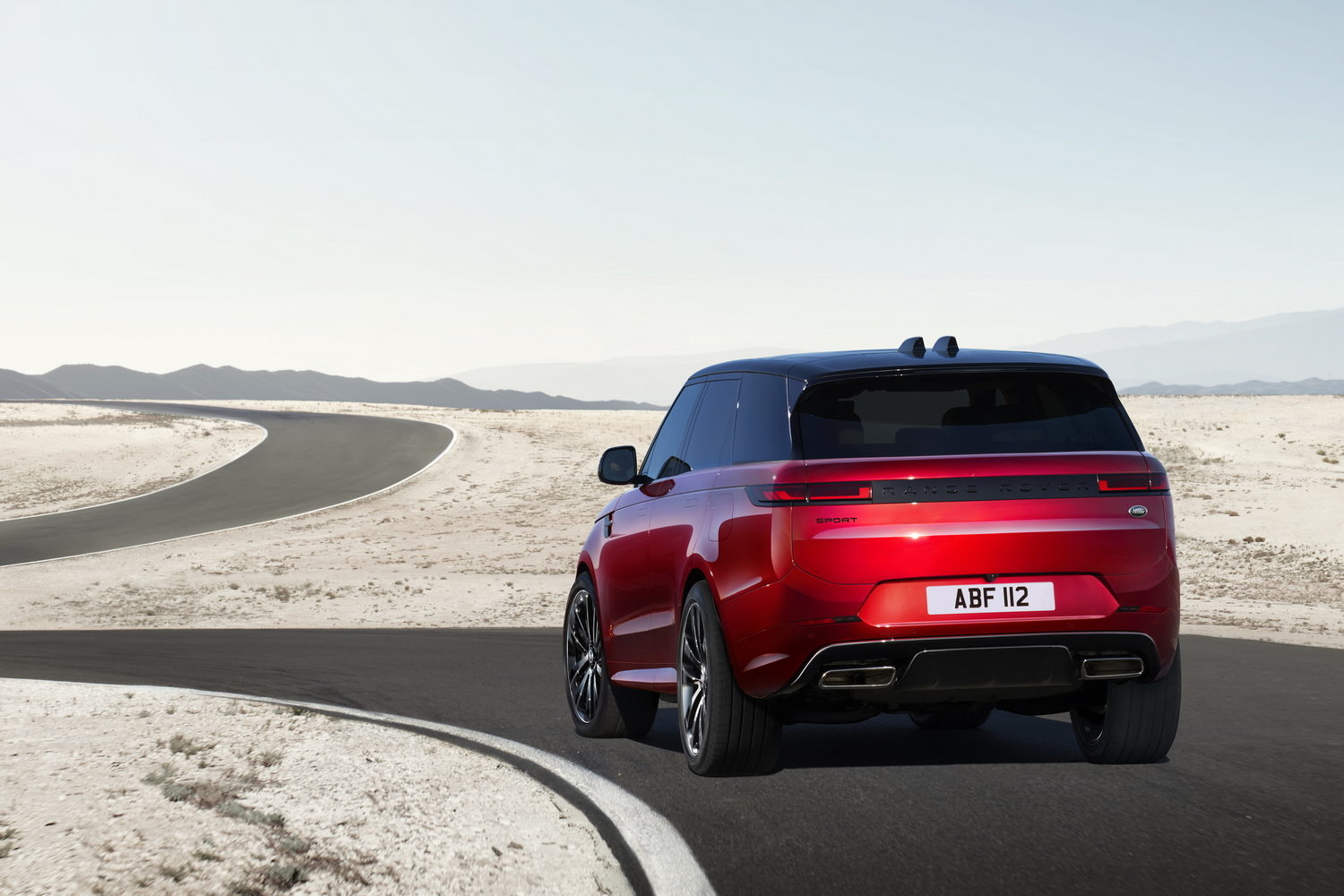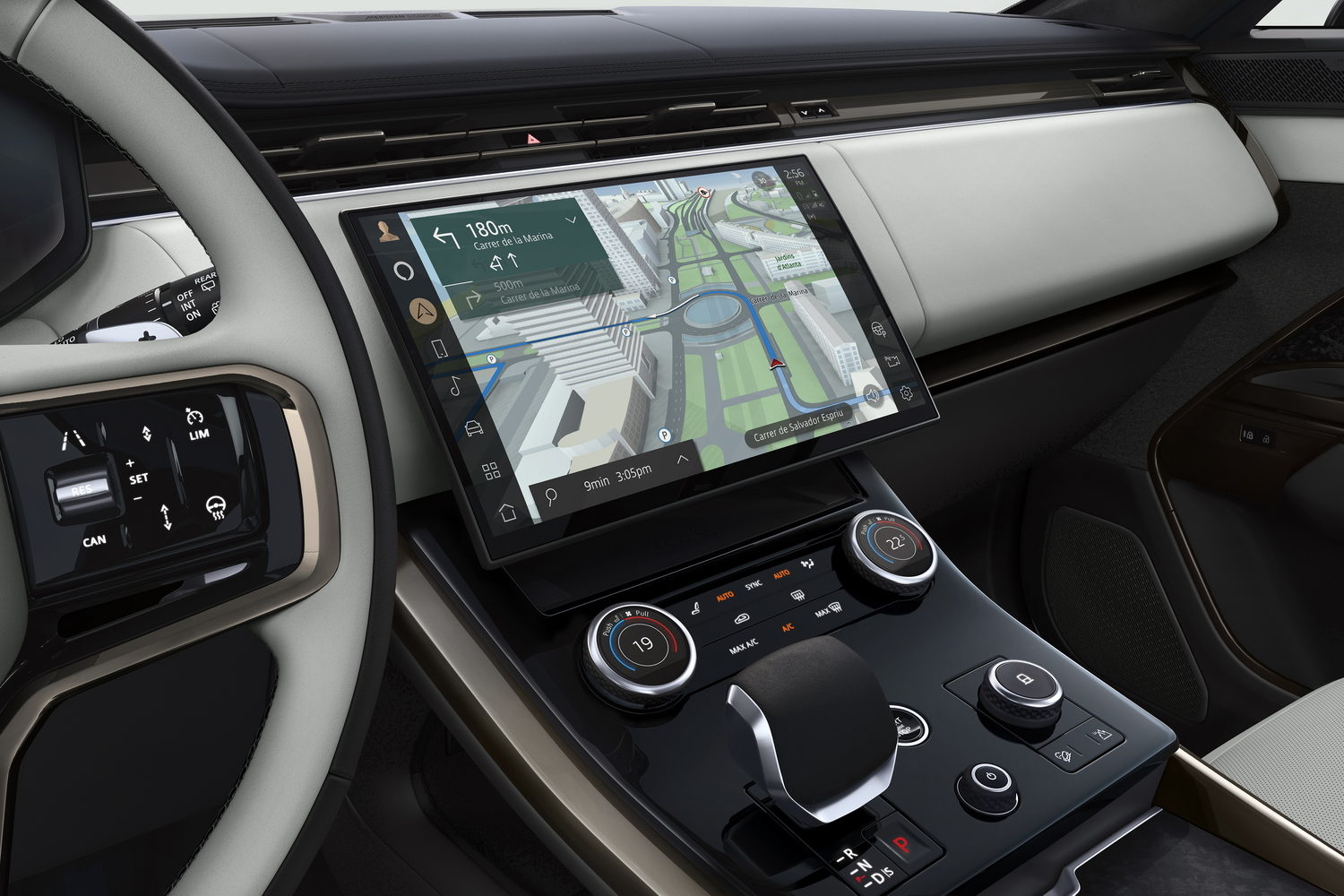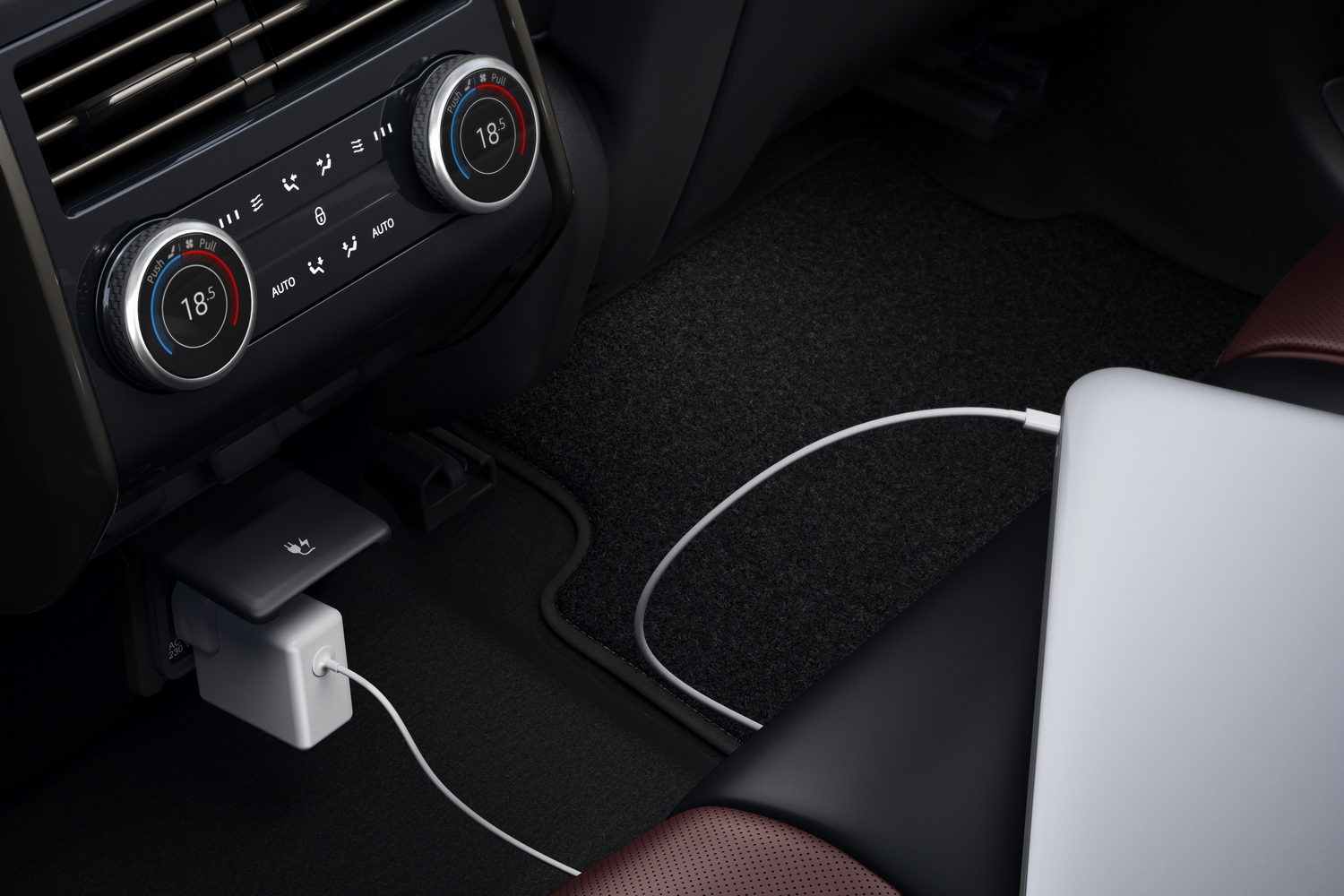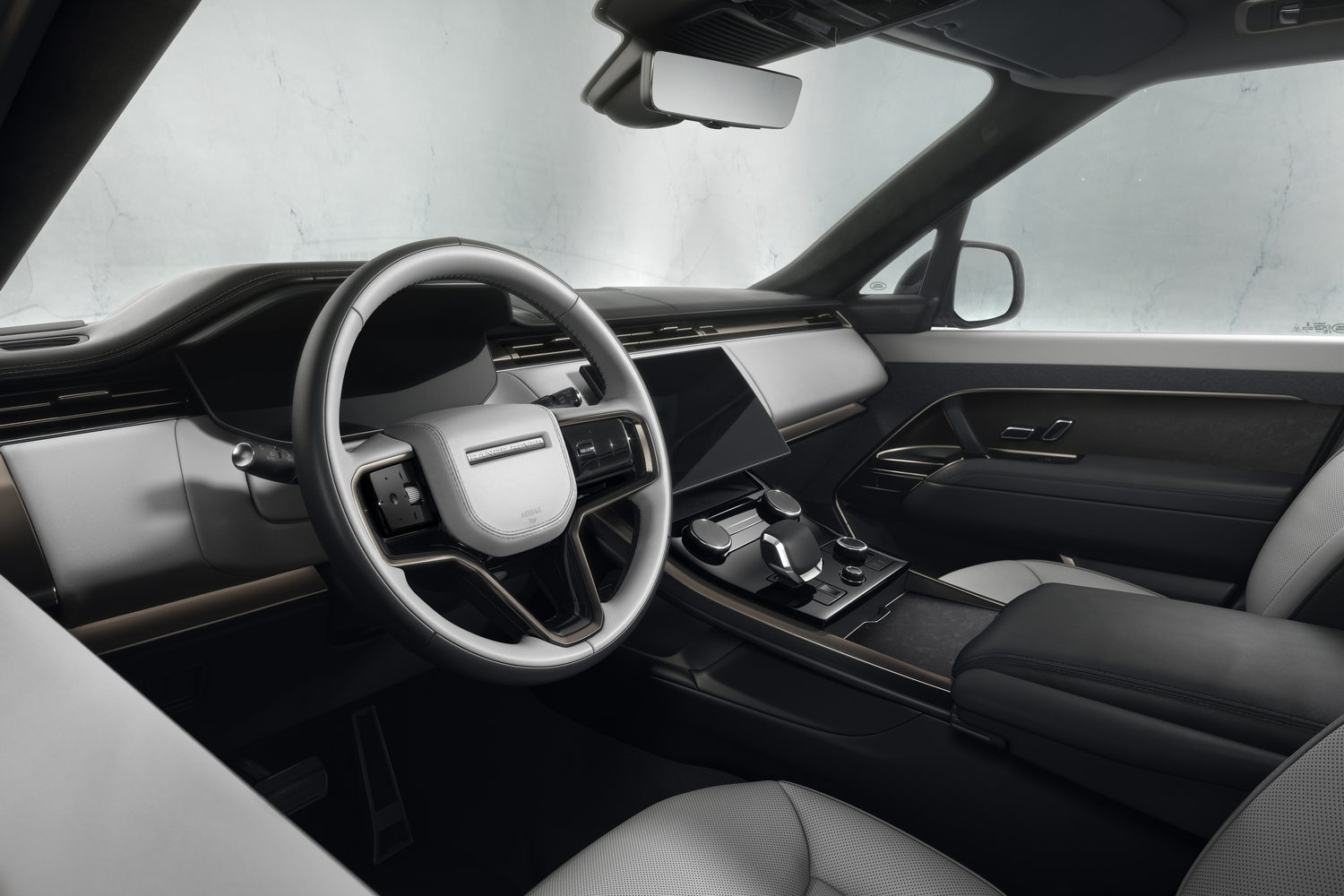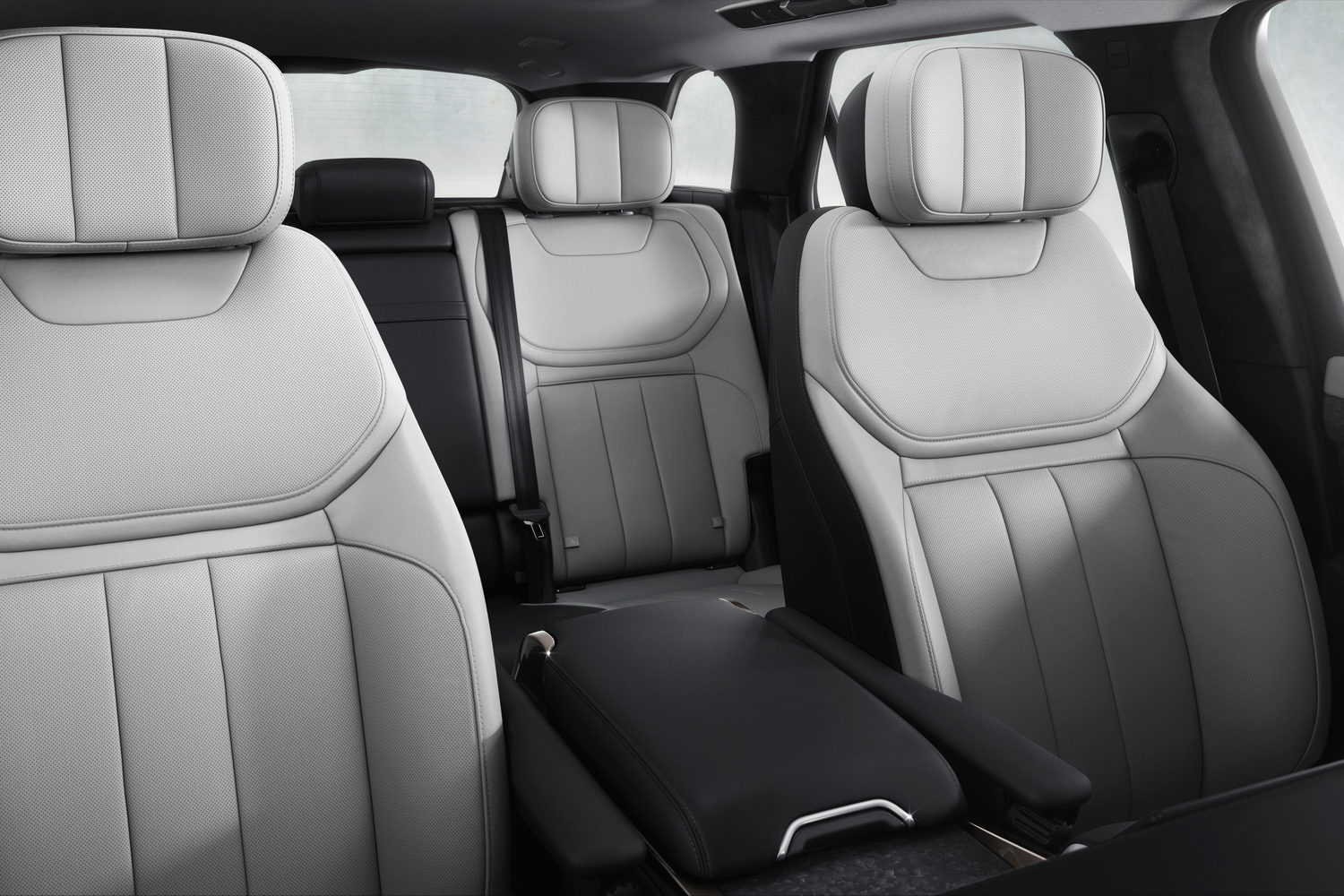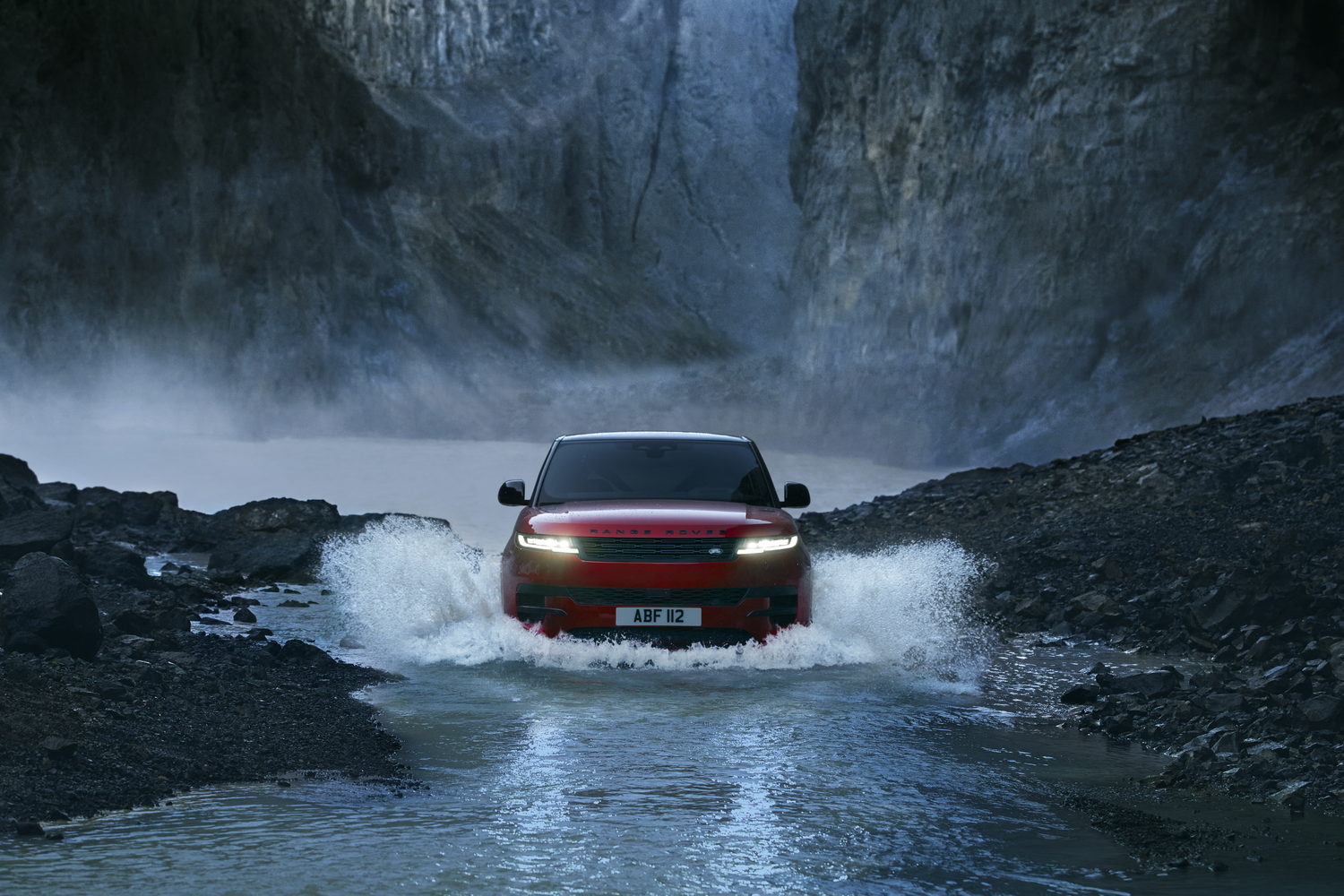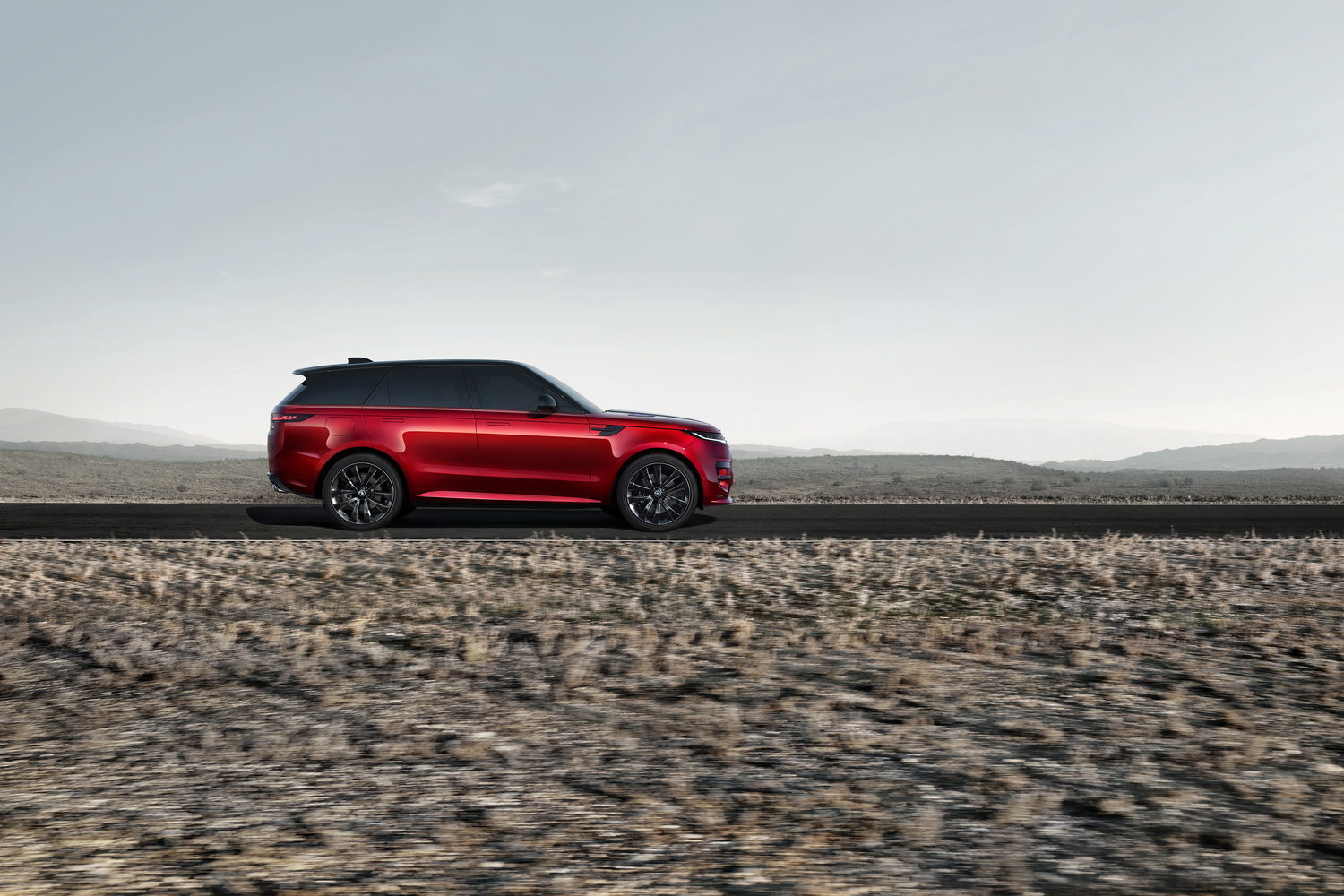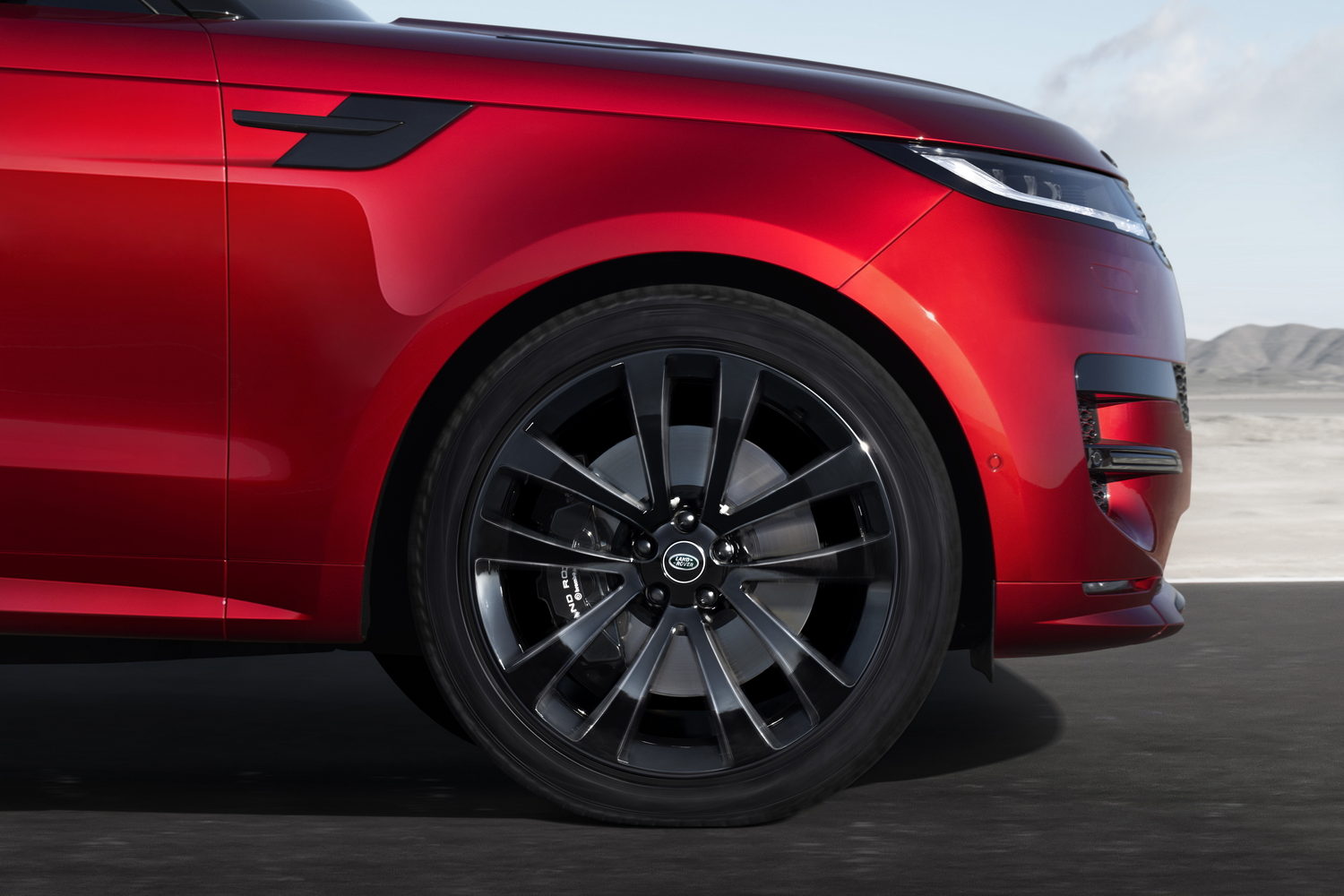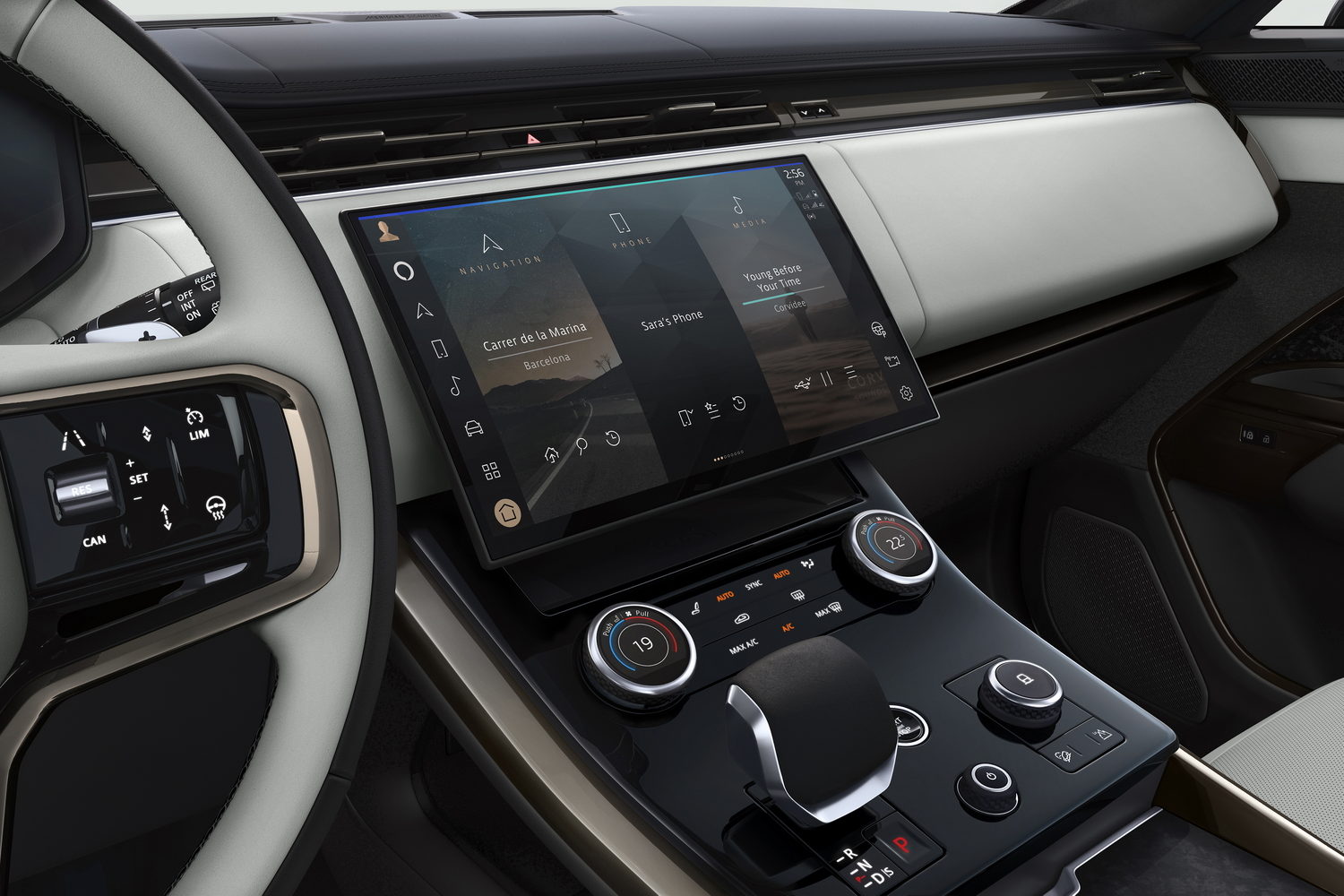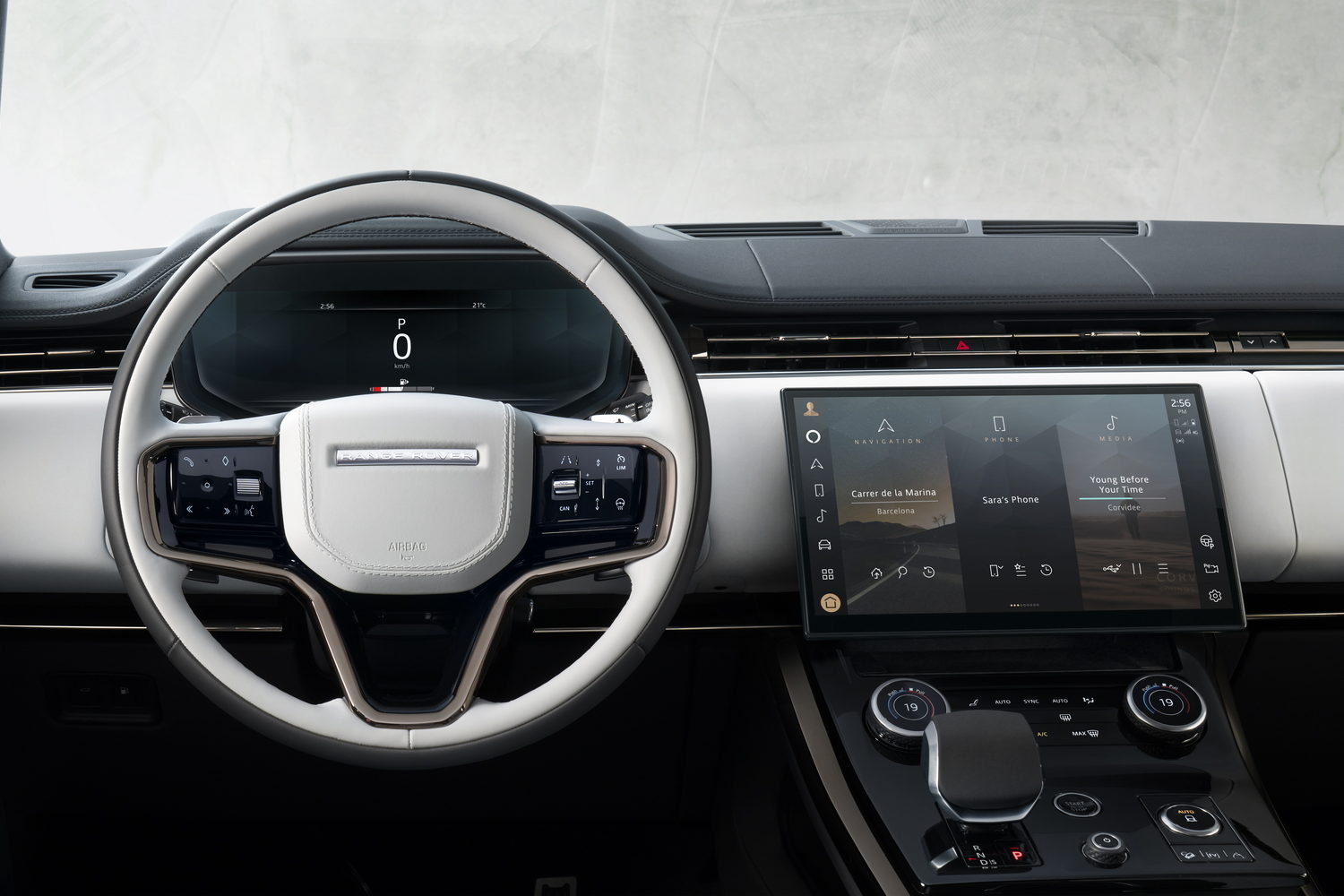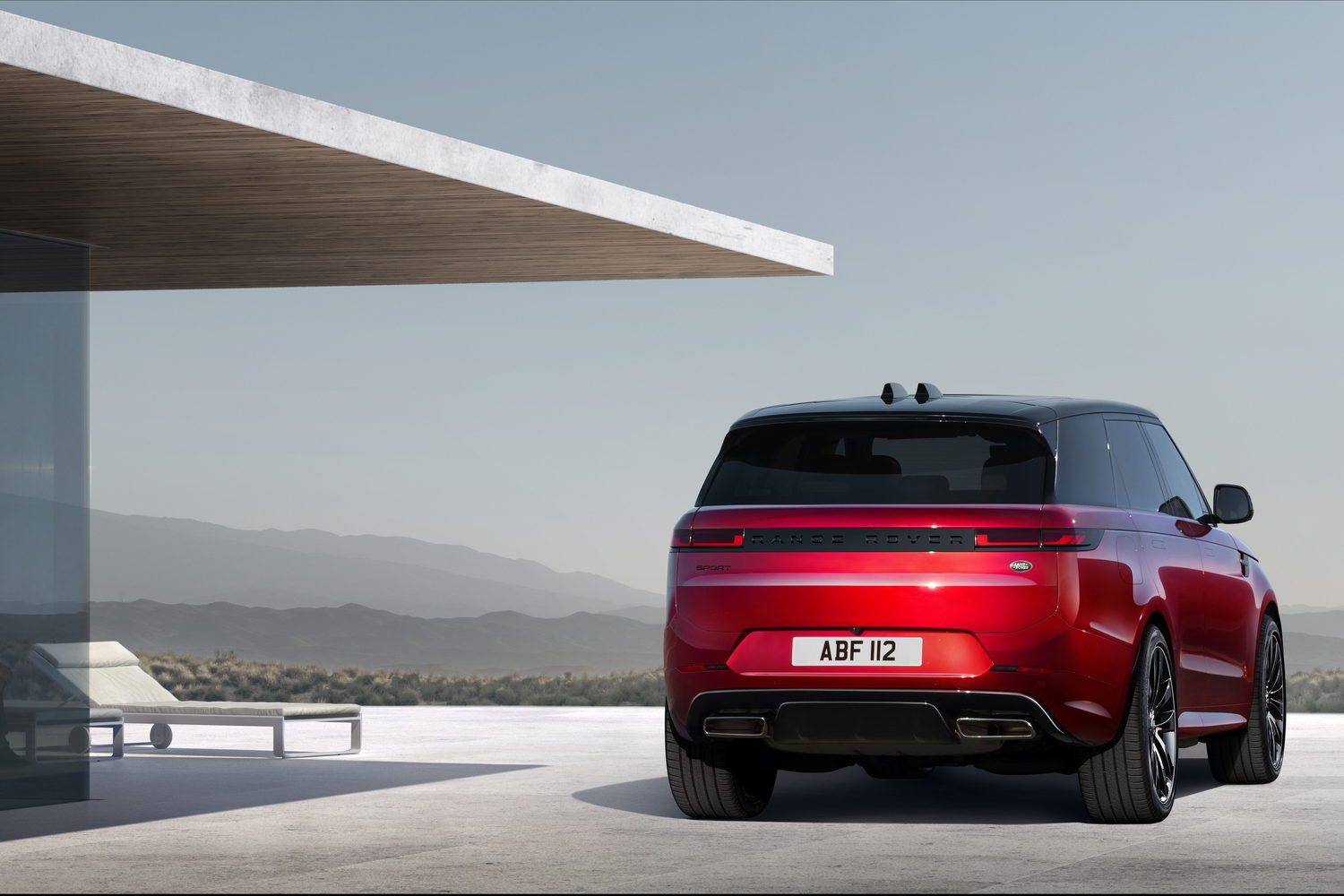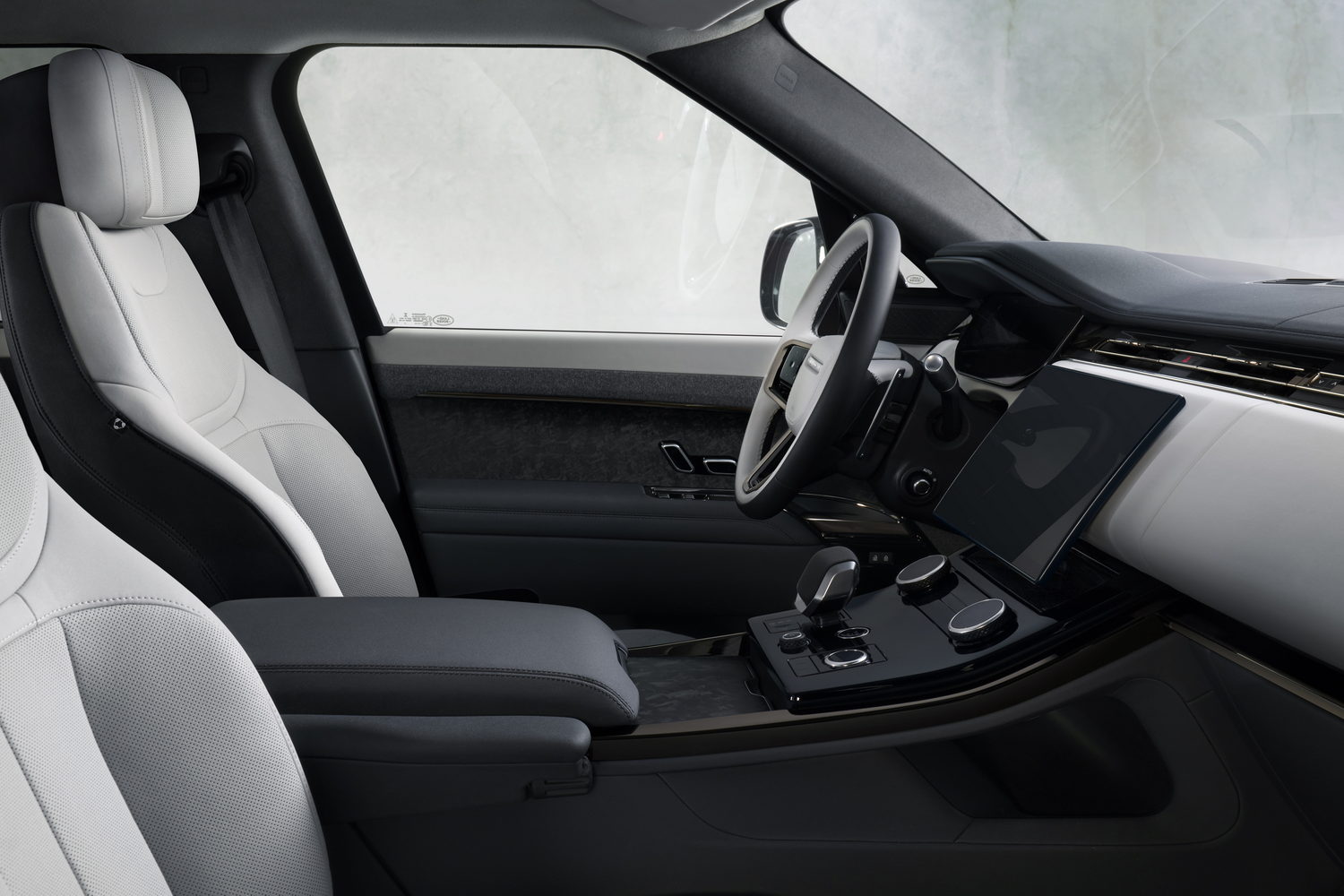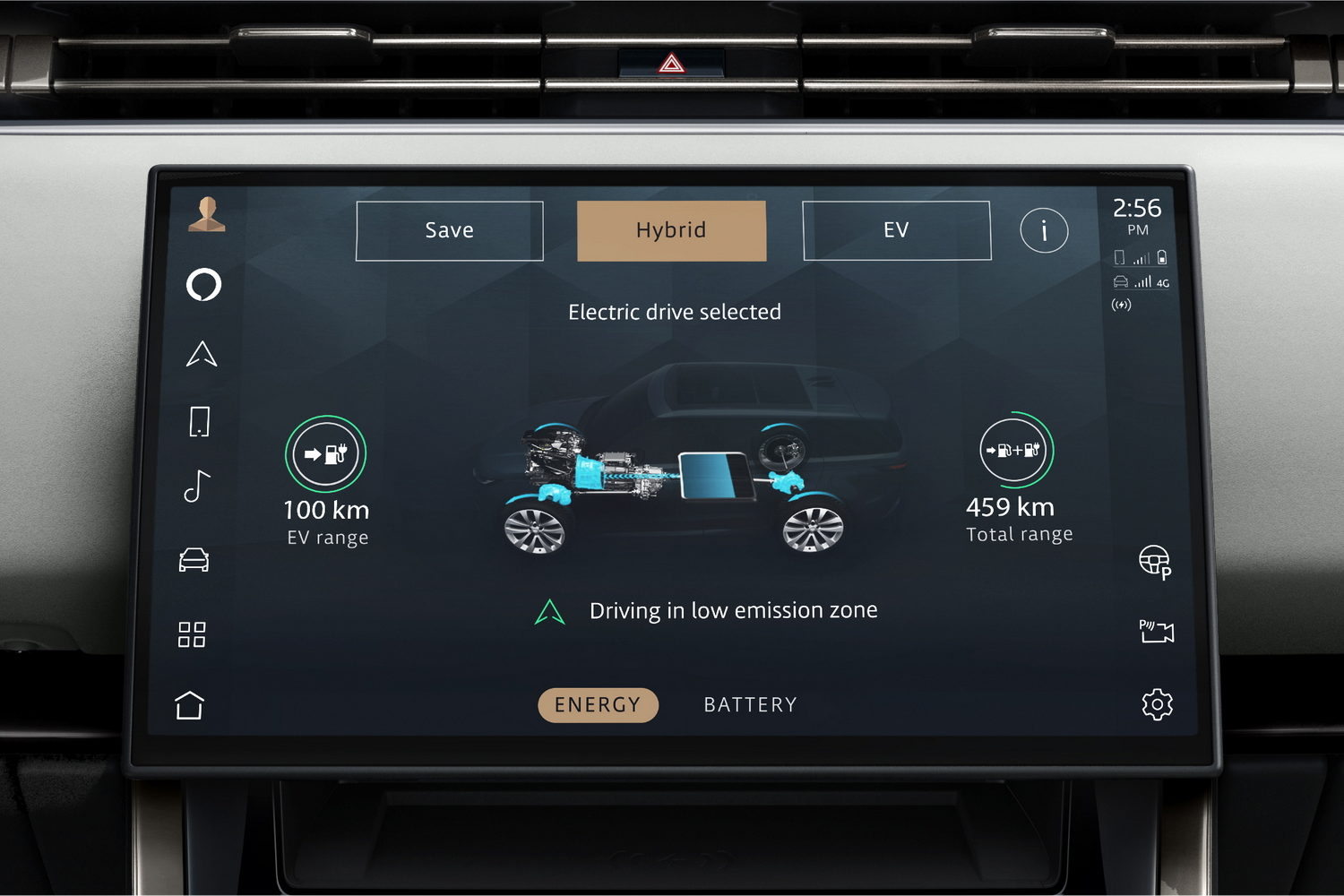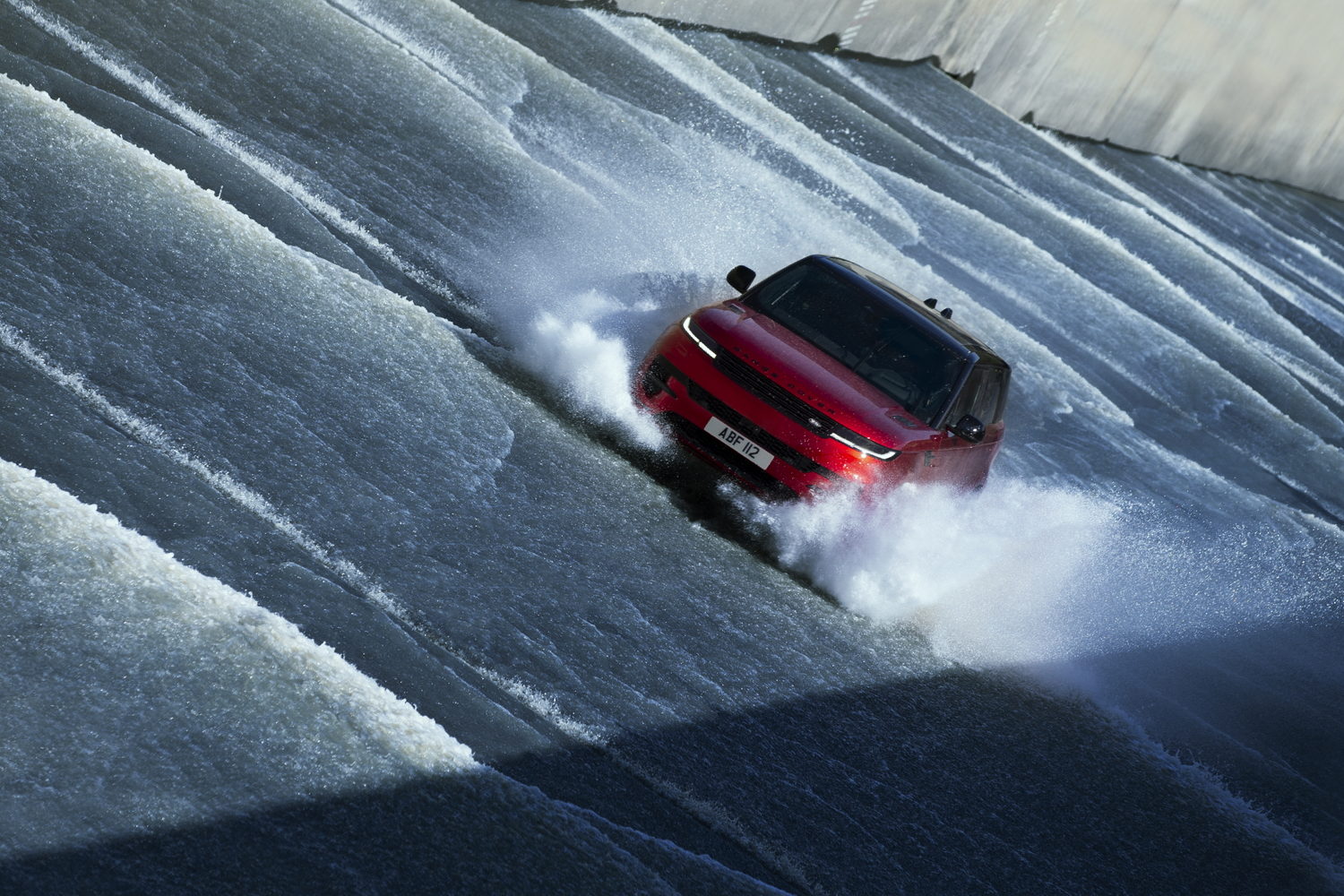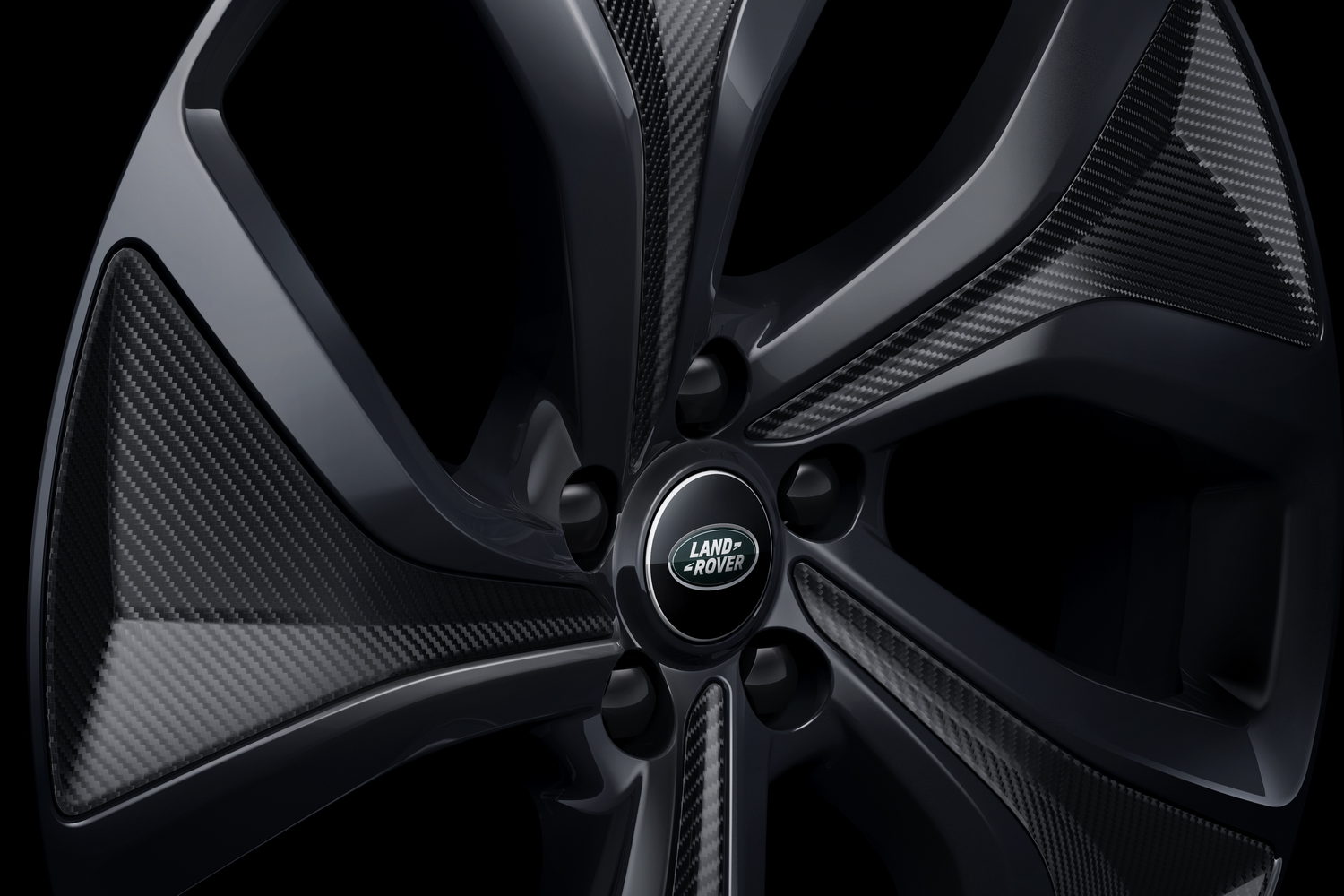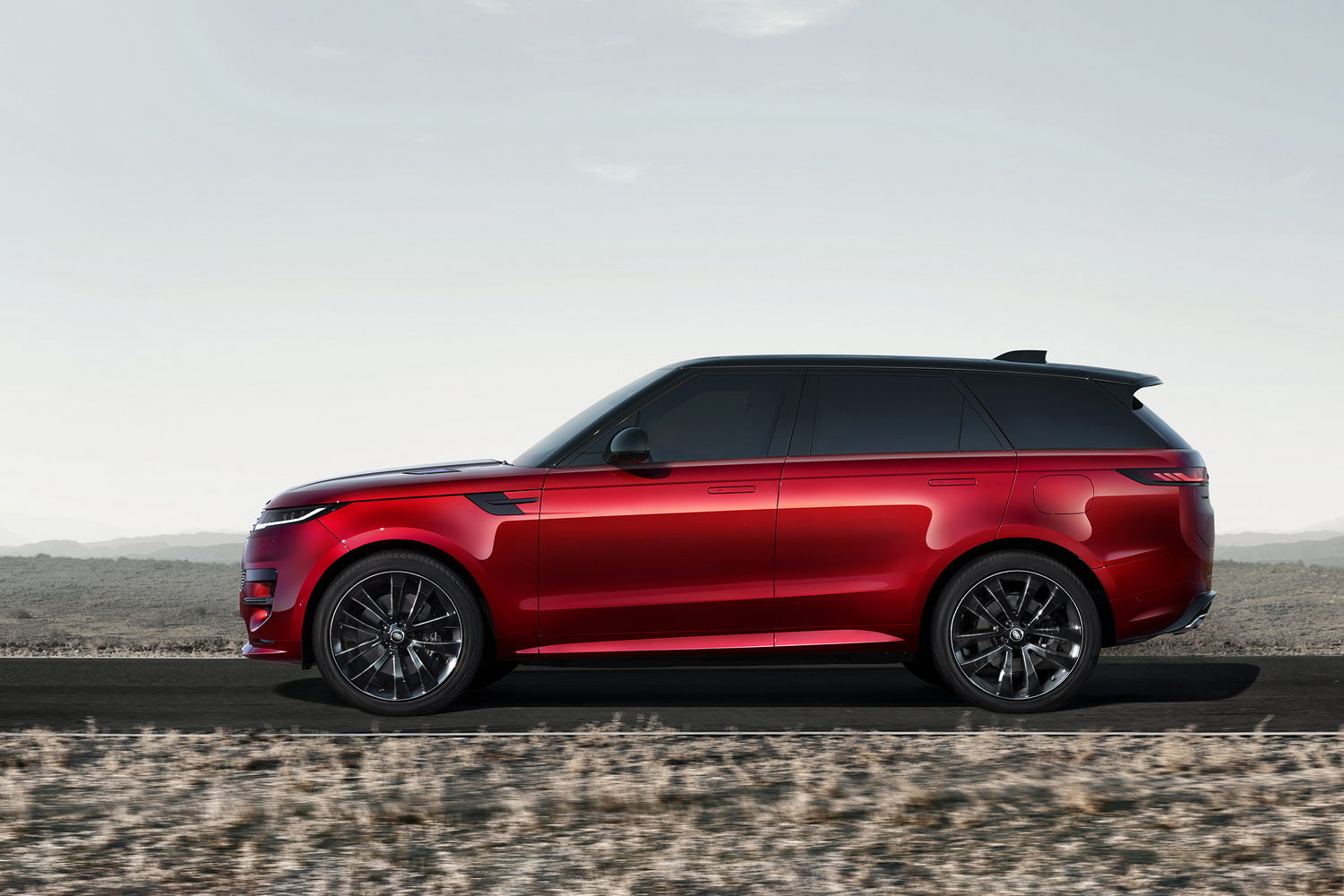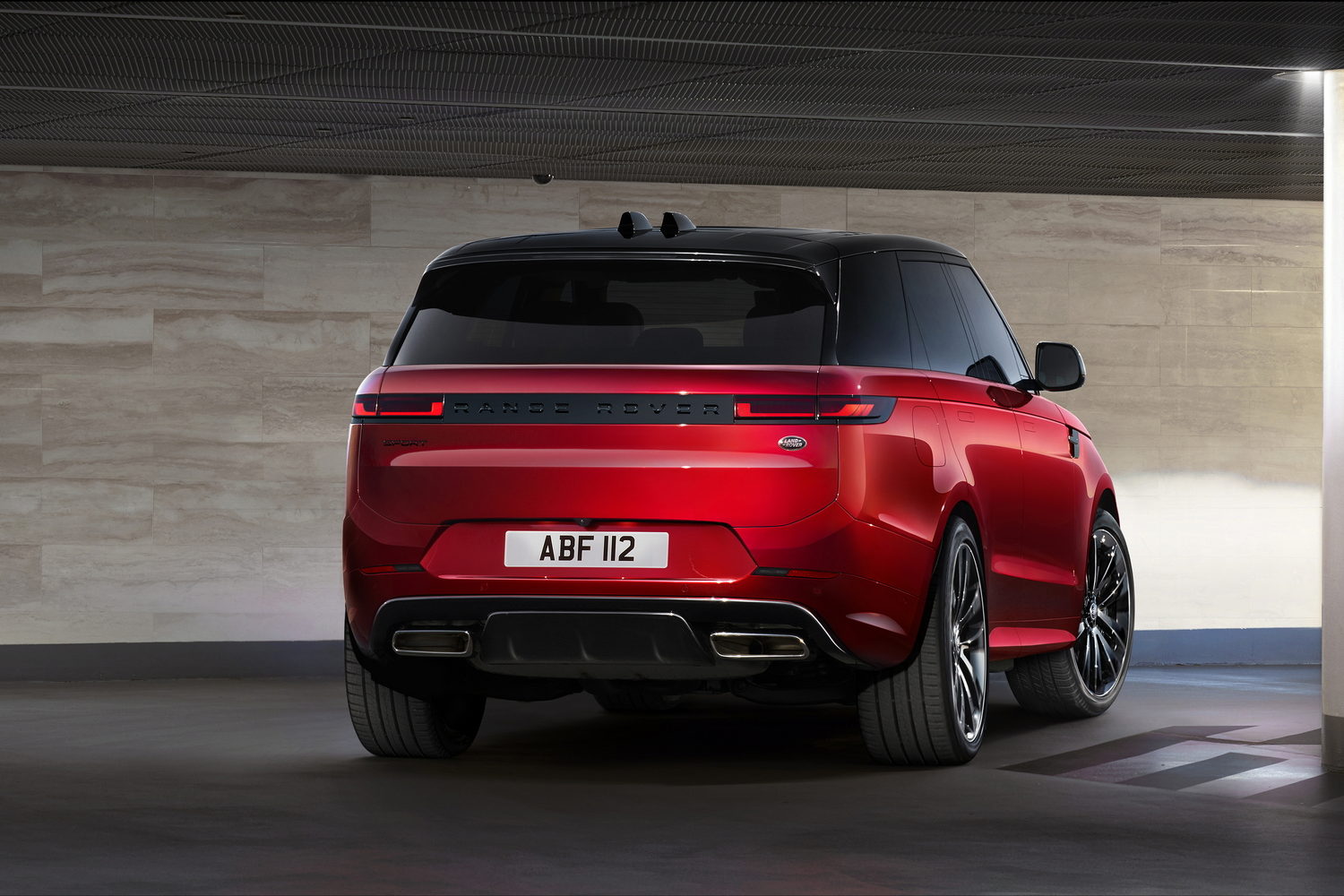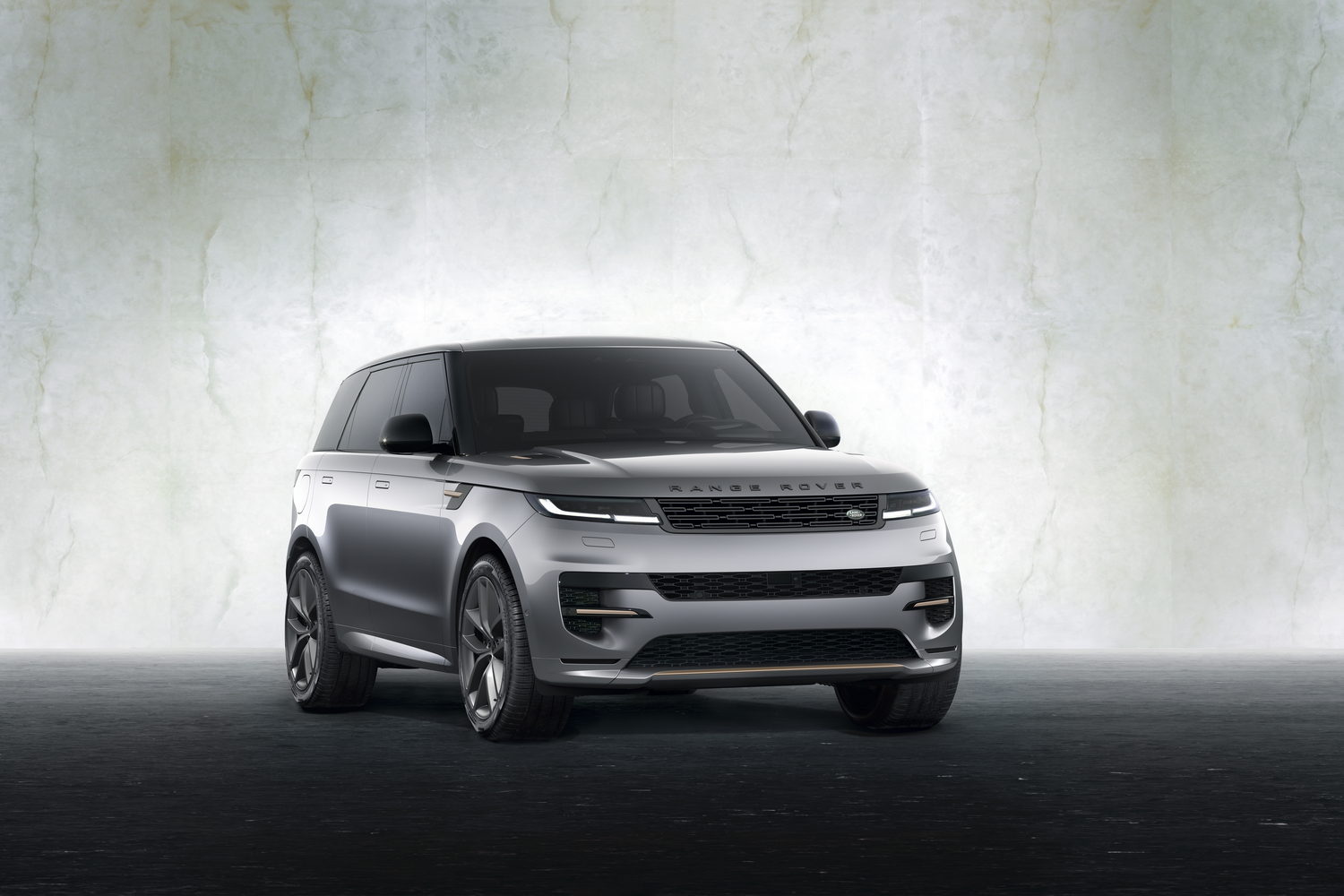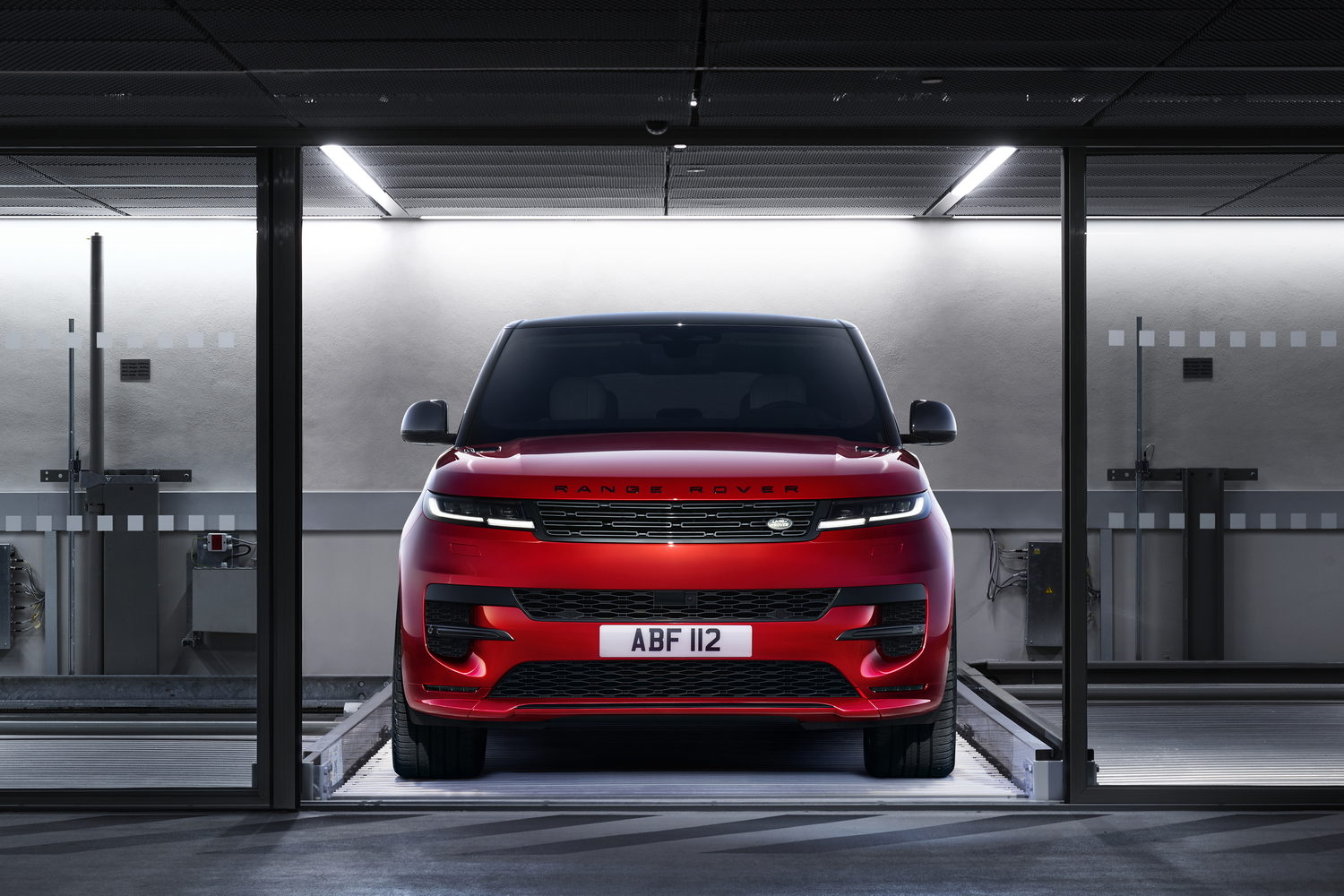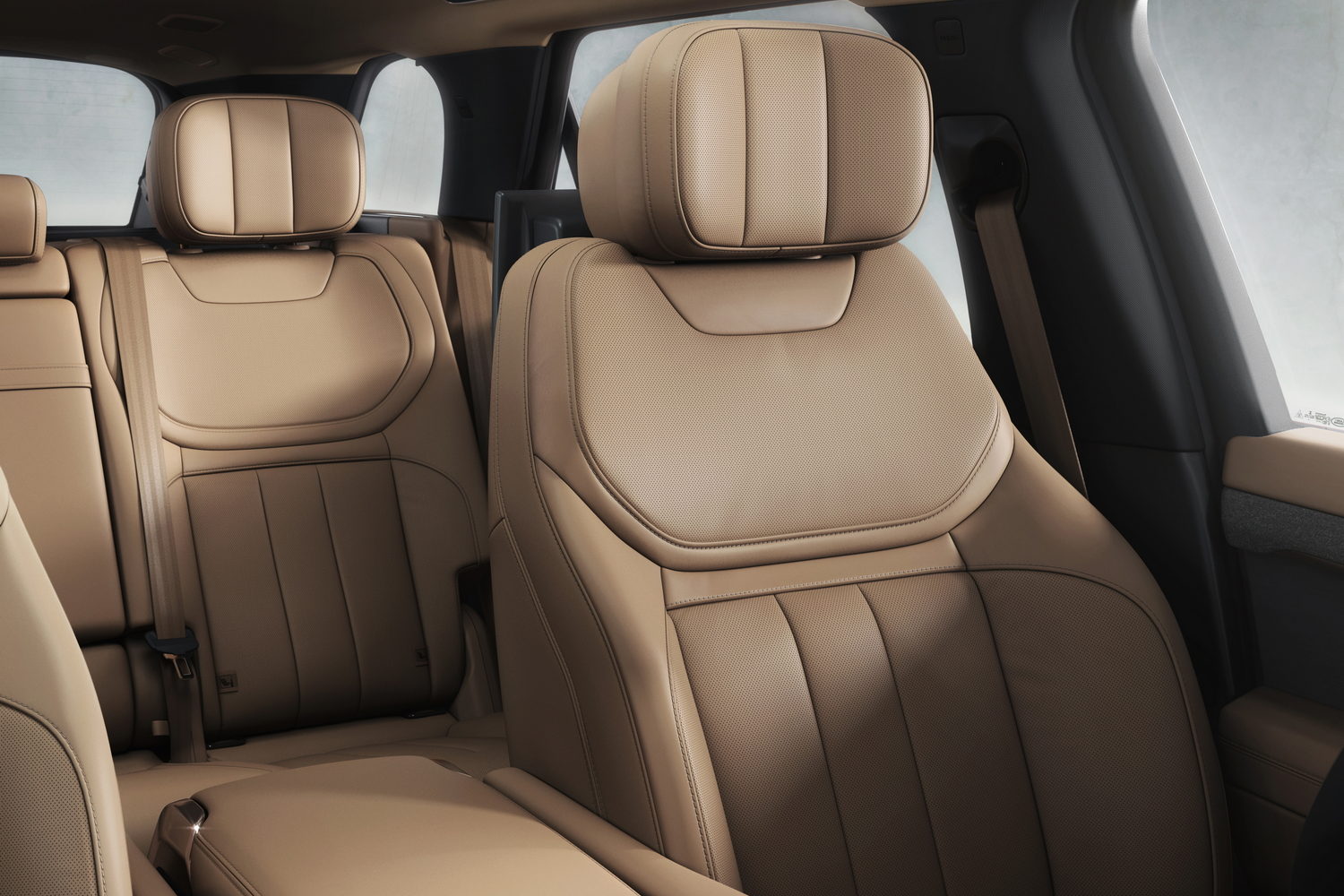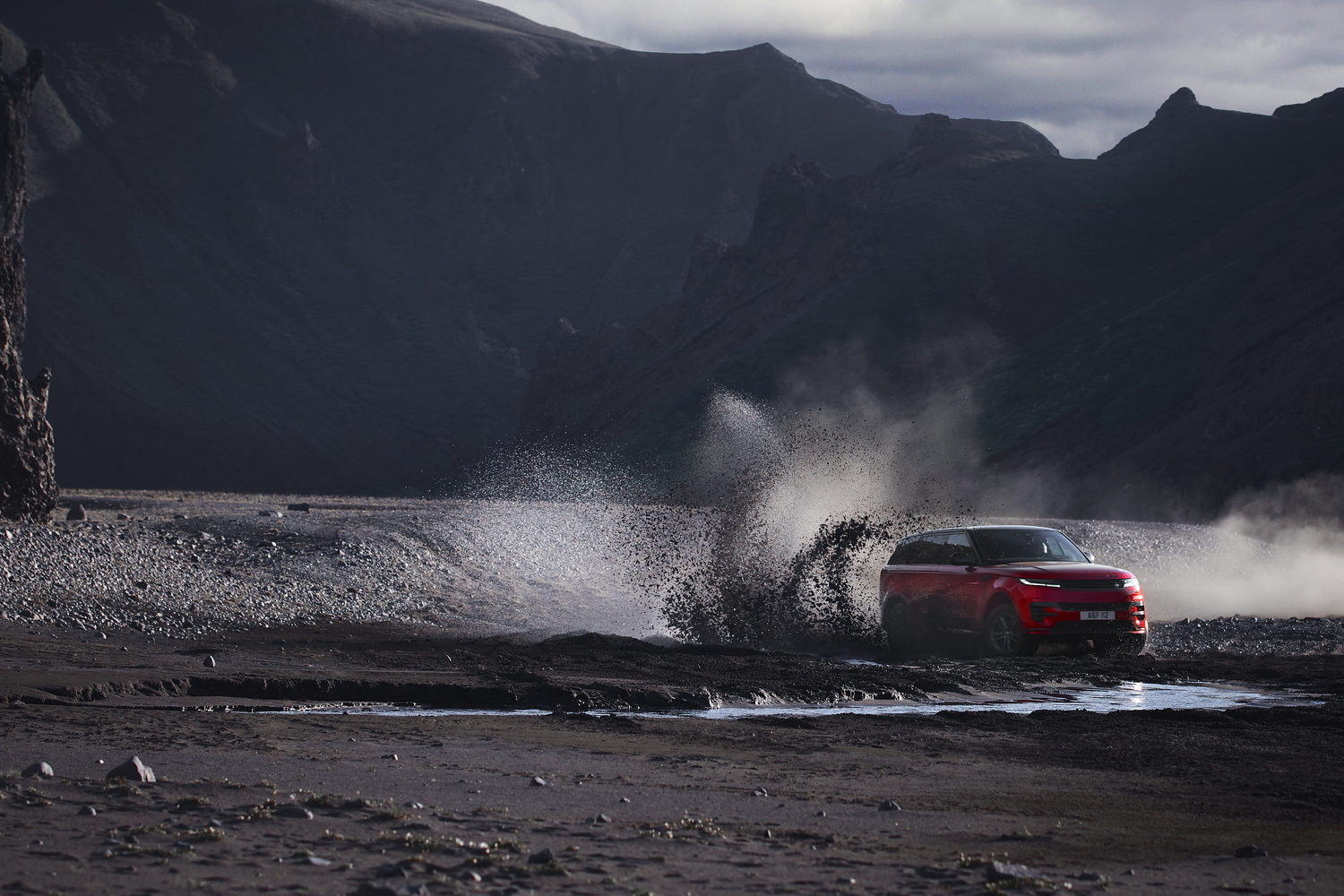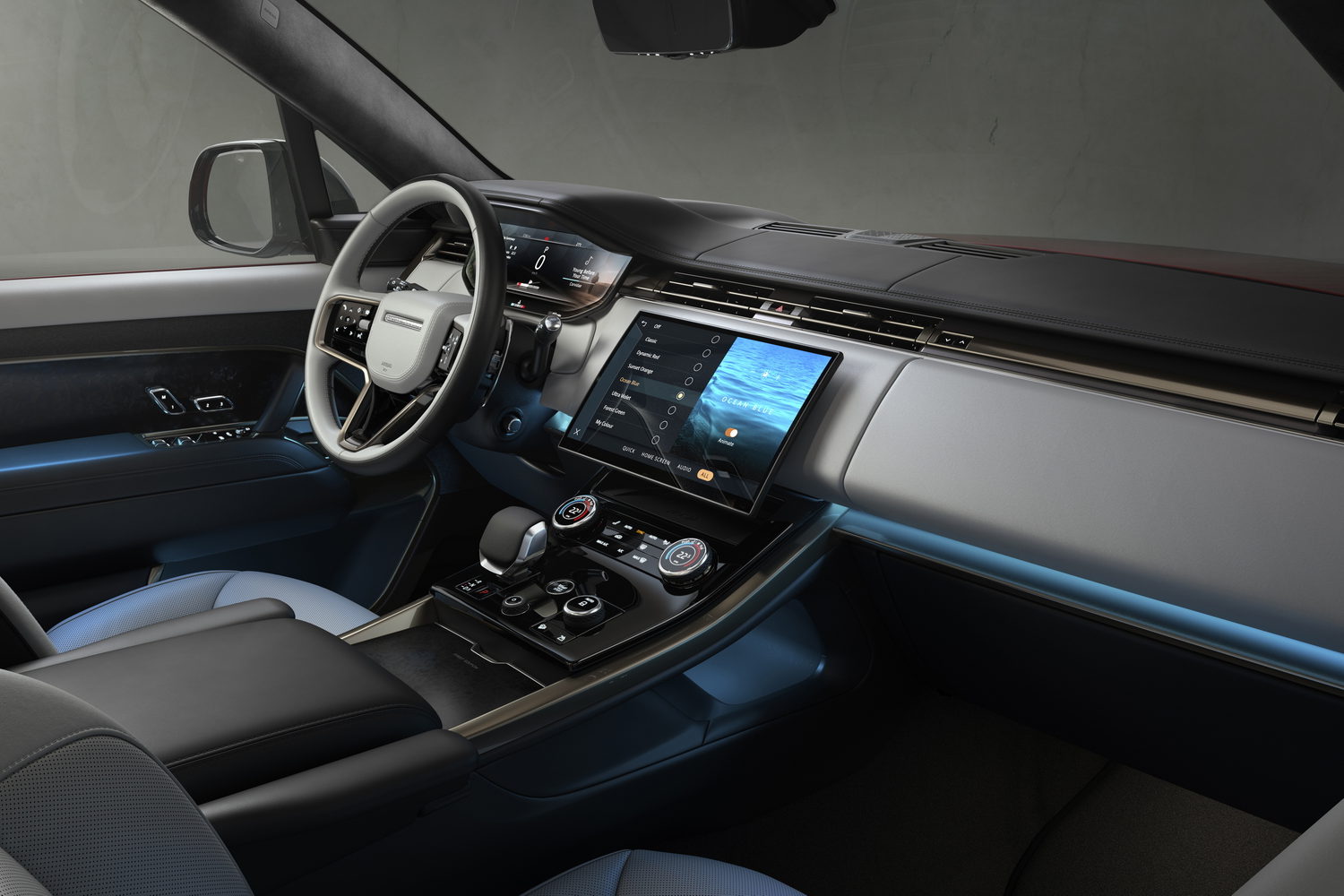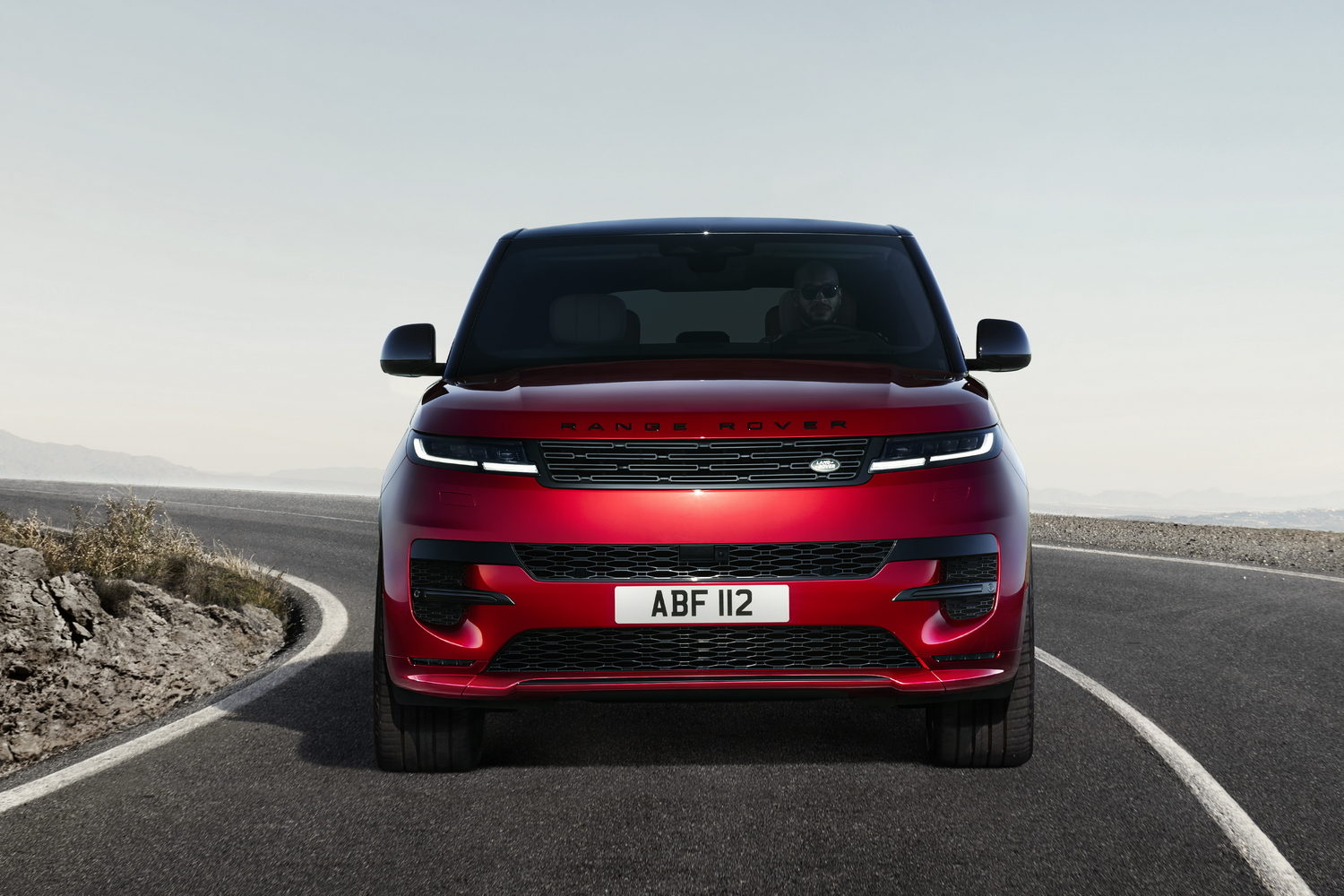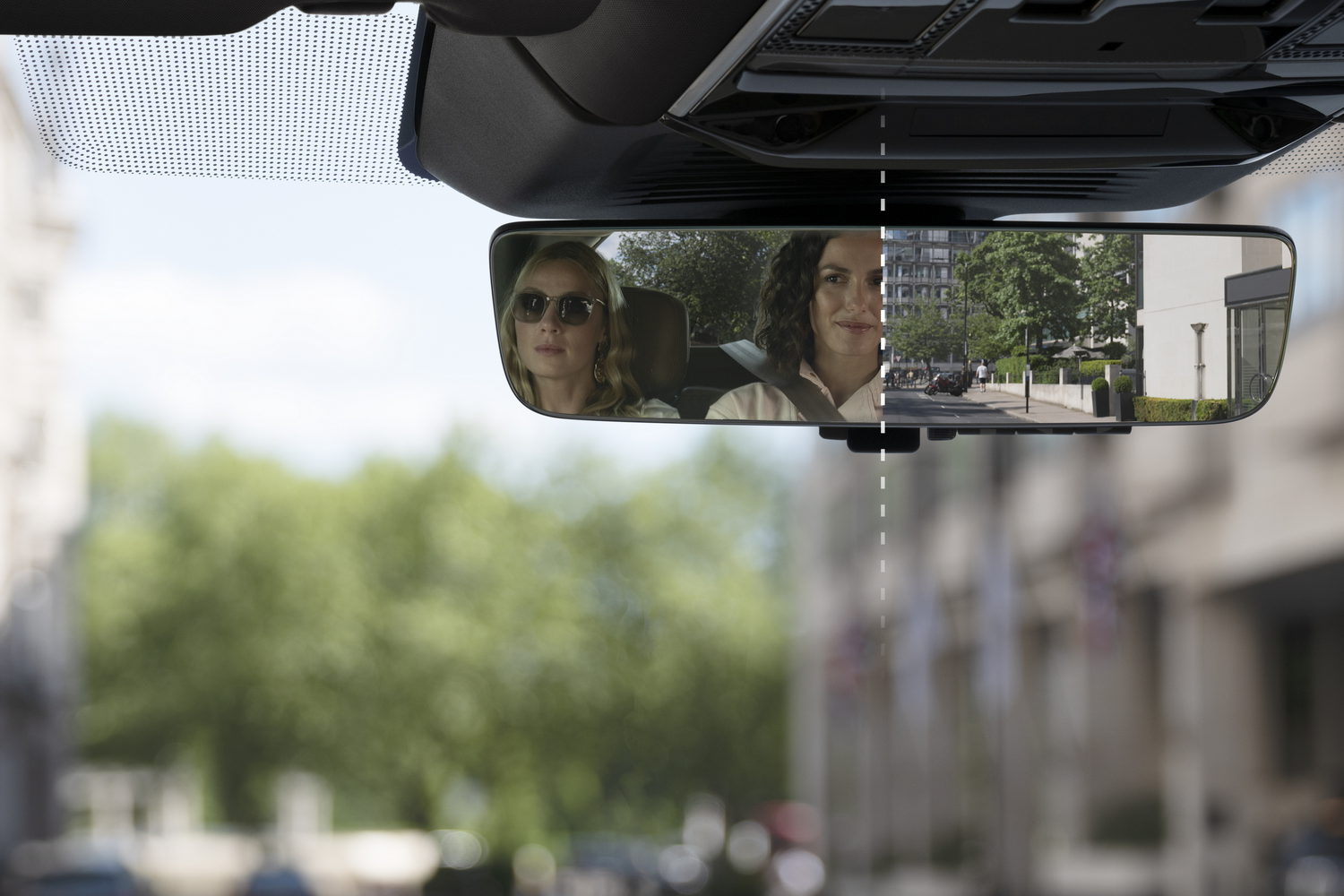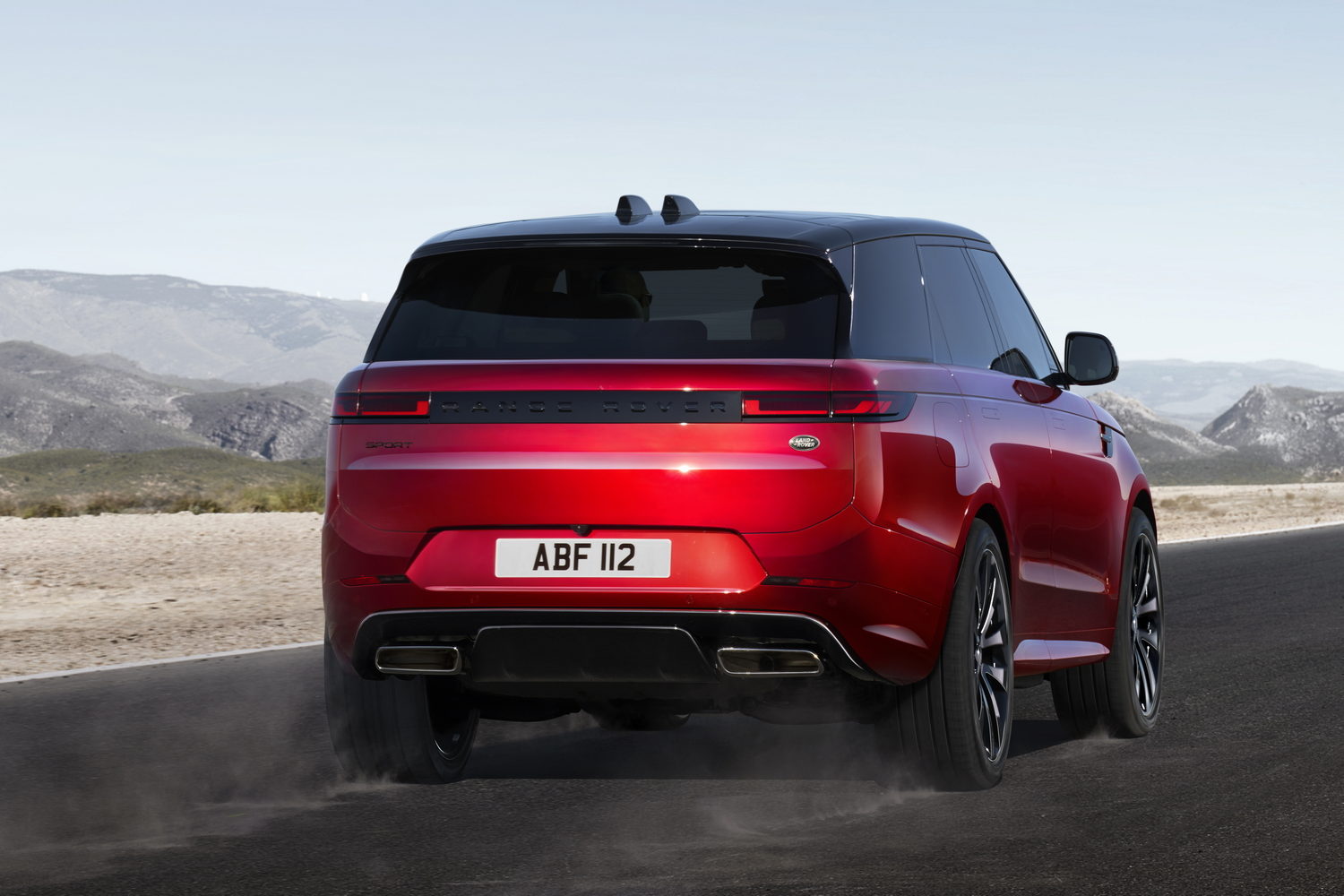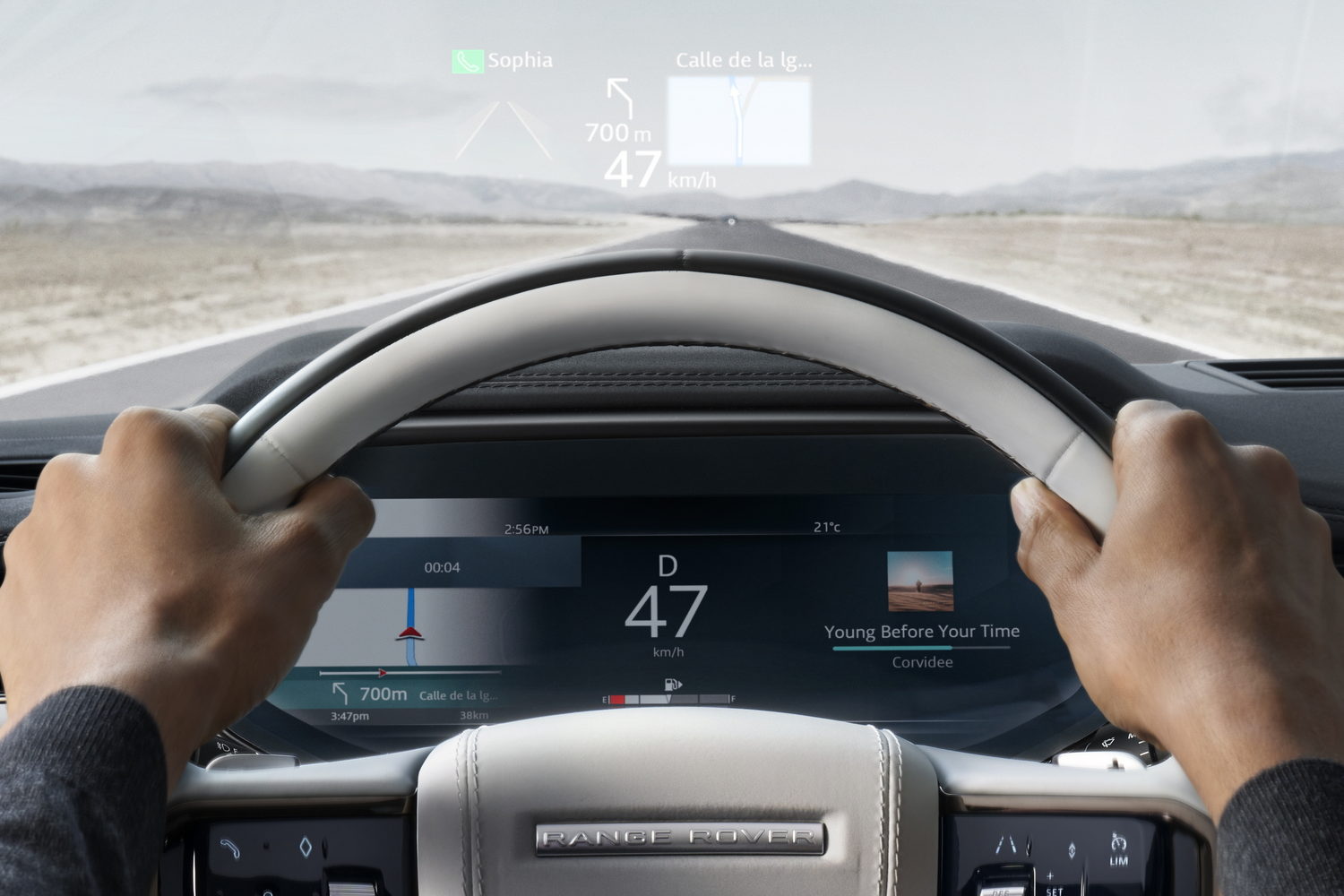The covers have come off the newest generation of Range Rover Sport and it's a model that marks a new chapter in design and, more importantly, electrification for the nameplate. At launch, all but one version will feature some kind of electrification, with plug-in hybrids delivering vast improvements to battery range and setting the stage for a fully electric version that is due to arrive in 2024.
'Reductionist' style
A striking design continues the brand's shift towards what it likes to refer to as "reductionist design" with crisper lines and less fuss part of an evolution of the previous model's style. The entire glasshouse of the Range Rover Sport features flush glazing that appears to blend the A-, B- and C pillars and windows into one element. Particular attention has been paid to designing how the windows meet the doors, appearing as if there is no seal between the two. As with the new Range Rover, the door handles retract when the car is locked to sit flush.
It remains unmistakably a Range Rover Sport, with a falling roofline and rear bumper kick up to create a familiar silhouette. The new model will come in two distinct design specifications. Standard cars will feature some hard-wearing cladding around the car's base, affirming that this is still an off-road capable vehicle. For Dynamic versions, there is a greater emphasis on on-road driving. This is reflected in the fully painted body and the fitment of a front apron that hints at a sportier image - as do the 23-inch wheels.
New LED headlights are the slimmest Land Rover has ever fitted and carry an updated design signature while offering the company's latest matrix beam technology. This can shadow up to sixteen vehicles thanks to 1.3 million individually controlled digital micro-mirror devices in each unit. Around the back, equally slim taillights sit within a horizontal bar that spans the tailgate. This presents a different appearance from the vertical lights of the Range Rover.
Inside is a 13.7-inch digital instrument display and a 13.1-inch curved touchscreen that runs the latest Pivi Pro infotainment software. Connectivity will be a strong point of the new Range Rover with wireless Android Auto and Apple CarPlay at the heart of it. A 15W wireless charging pad will keep devices topped up and Land Rover can also push over-the-air software updates to the car when required.
Numerous luxurious materials are available to help buyers specify the interior to their liking. In addition to the traditional leather upholstery, Land Rover is introducing more sustainable alternatives to keep up with changing customer demand. Ultrafabrics is a new synthetic material made from recycled plastics yet retains the same look and feel as leather. Other new decorative materials include a dark gloss chrome and forged carbon. Meanwhile, an innovative new noise cancellation system uses a microphone in each wheelarch to detect tyre and road noise before sending a signal to the Meridian stereo system. That then creates the exact opposite sound frequency to play through speakers mounted in the headrests to produce a quiet zone for each passenger.
A new V8 petrol engine
Most of the Range Rover Sport engines are 3.0-litre six-cylinder units. Diesel versions start with the 249hp D250, which benefits from 48-volt mild-hybrid (MHEV) technology to optimise efficiency and responsiveness. With 600Nm of torque, it has strong pulling power and will accelerate to 100km/h from rest in 8.0 seconds. The mid-range D300 gets a torque increase to 650Nm and, as the name suggests, has a 300hp output, enhancing performance, as reflected in a 6.6-second dash to 100km/h. The D350 is the most powerful diesel engine, breaching the 100km/h barrier in 5.9 seconds thanks to its 350hp and 700Nm outputs. All diesel engines produce CO2 of between 194- and 195g/km.
Two 3.0-litre straight-six-cylinder petrol engines also use 48-volt mild-hybrid tech. The 360hp P360 can generate 500Nm of torque, out-accelerating the diesel engines while using 9.3 litres/100km.
Emissions are higher for the petrol engines; the P360 and P400 emit 212- and 213g/km, respectively. The P530, a 4.4-litre twin-turbo V8 that Land Rover has co-developed with BMW, tops the petrol range. It drops the mild-hybrid system and produces 530hp and 750Nm of torque, making it the fastest accelerating Range Rover Sport with a 0-100km/h time of 4.5 seconds.
Extended range plug-in hybrid options
The new plug-in hybrids are likely to be the most popular choices with buyers in Ireland, partly down to their low emissions rating of 18g/km. Using a 3.0-litre petrol engine with a 105kW electric motor, they feature an extended range thanks to a 38.2kWh battery (31.8kWh usable), almost three times larger in capacity than the outgoing Range Rover Sport PHEV. In WLTP conditions, that battery can provide up to 113 kilometres of electric driving range, with Land Rover saying that a distance of up to 88 kilometres is possible in real-world situations with passengers and luggage on board.
The P440e has maximum outputs of 440hp and 620Nm, accelerating from 0-100km/h in 5.8 seconds, and it can drive at up to 140km/h using only the electric motor. Leading the plug-in hybrid charge is the P510e, which uses the same powertrain but with increased outputs of 510hp and 700Nm. Adding further appeal to the hybrids is that offer rapid DC charging, meaning the battery can be replenished to 80 per cent in under one hour using a 50kW source. With a 7.2kW home charger, the battery will be full within five hours.
Ability on and off-road
All versions of the new Range Rover Sport use an eight-speed ZF automatic gearbox and twin-speed gearbox that uses Land Rover's Intelligent All-Wheel Drive system to distribute power according to the road conditions. New Dynamic Air Suspension is fitted to all models as standard, helped by Dynamic Response Pro, which uses electronic active roll technology to manage body control up to 500 times per second.
All-wheel steering is available on all models, coming as standard on the P510e, and can give increased manoeuvrability at low speeds by turning the rear wheels in the opposite direction of the front wheels. Above 50km/h, the rear wheels turn in phase with the fronts for added stability.
Away from the tarmac, the Range Rover Sport can wade through depths up to 900mm and has approach and departure angles of up to 33- and 30 degrees, respectively. All-Terrain Progress Control evolves into Adaptive Off-Road Cruise Control. At the same time, the latest generation of Terrain Response provides all the assistance you might need when exploring the less beaten track.
The new Range Rover Sport pricing will start at €114,150 in Ireland.

